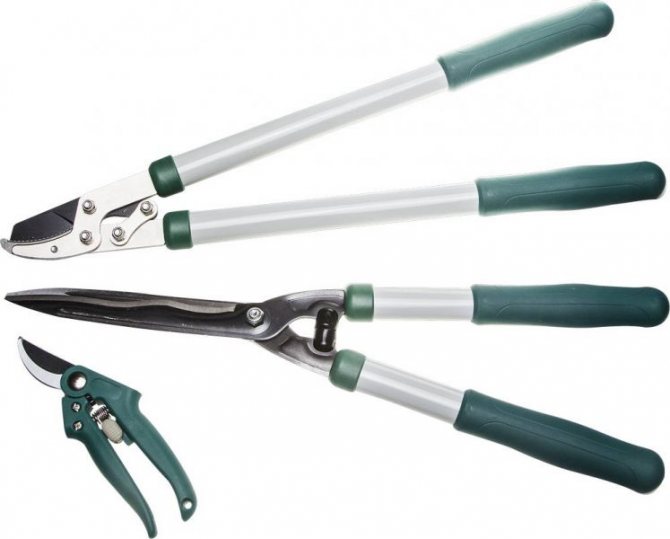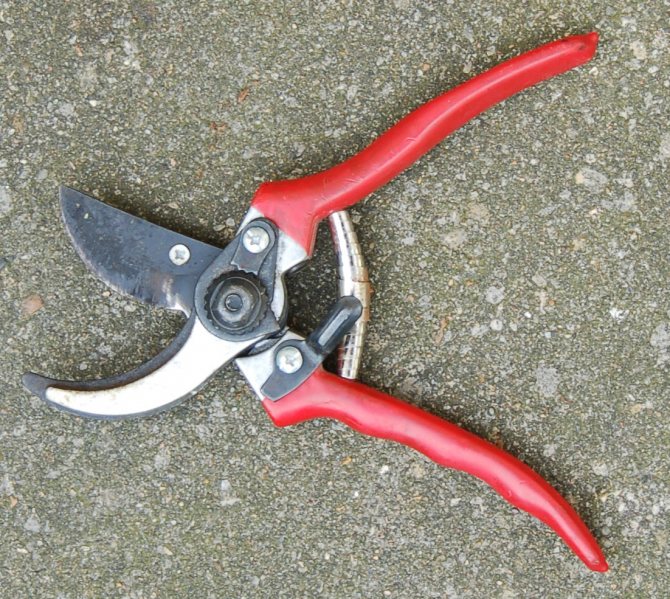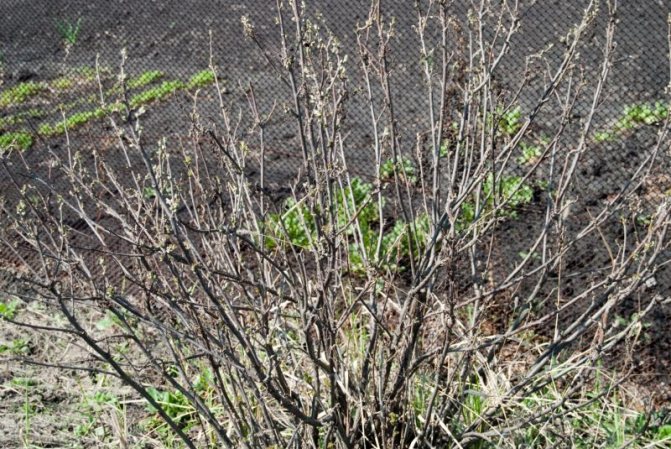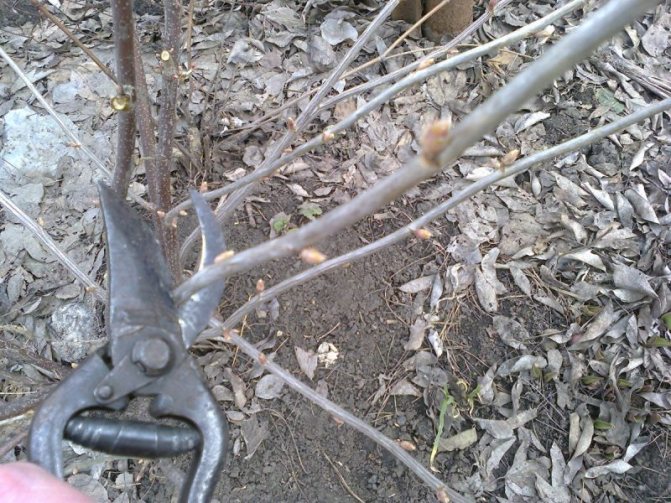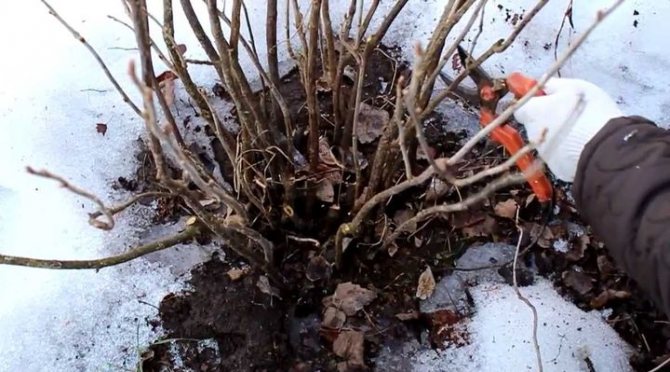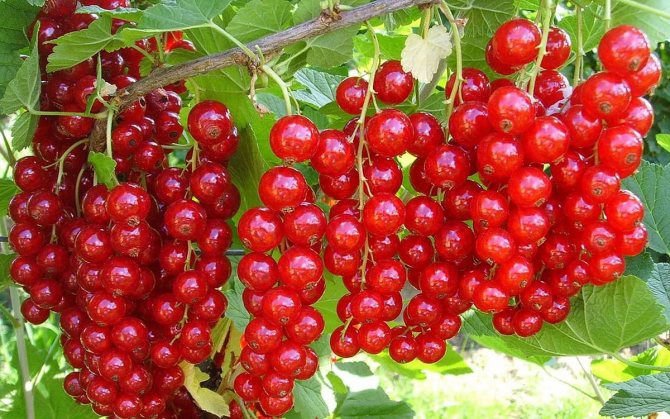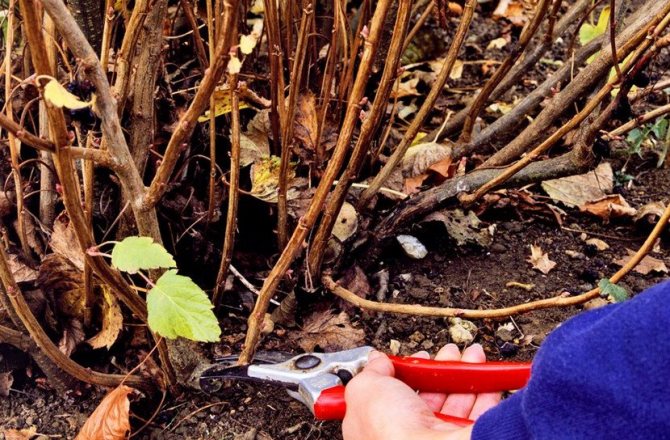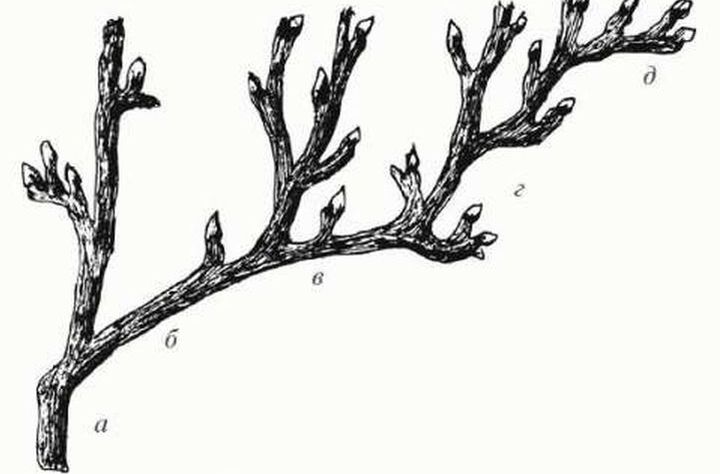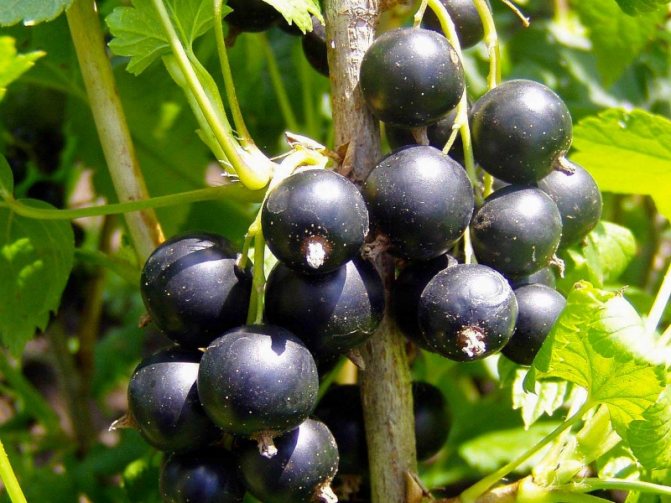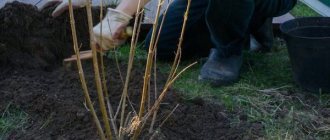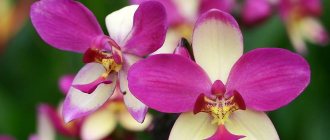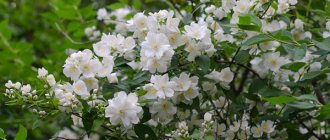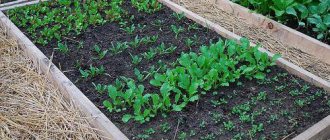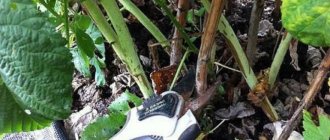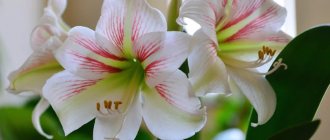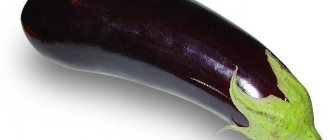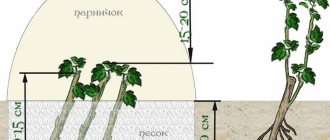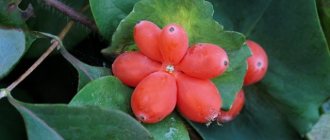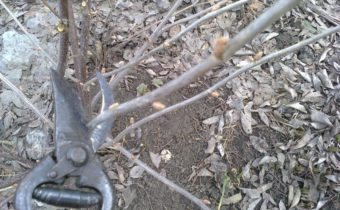
The autumn list of activities in the garden, including pruning currants, is aimed at preparing the bushes for winter, which then affects the overall harvest. If you do not own the technology of this operation and do not know the optimal timing of the procedure, it is unlikely that it will be possible to correctly form a bush and get a good harvest. Pruning currants in the fall for beginners will not be difficult. You just need to read our article to the end and follow it according to the recommendations provided.
Care features
In the last days of October, the plant completes the growing season and prepares for winter. At this time of the year, special care is taken to provide it with nutrients. This allows the bush to overwinter without loss. Winter time gives the currants the opportunity to rest before the new fruitful season. Autumn care for currants includes three components:
- Pruning.
- Soil processing.
- Top dressing and fertilizers.
Pruning various varieties
Rejuvenation is also carried out in early spring, but the advantage of performing the procedure in the fall is more time. Currant buds very early, after which pruning is no longer desirable. At the end of the harvest, you can slowly, adhering to the rules, process the garden culture. Pruning is carried out in October or November, before the onset of frost - when the leaves have flown around, but there is still no snow. At this time, the plant tolerates various interventions more easily. Whole processes are clearly visible. The procedure for pruning black currants of different varieties is the same:
- Branches over 5 years old are harvested under the root.
- The inner stems are cut to thin the crown.
- Young shoots that have grown over the past year are removed.
- Transverse and lateral shoots are cut out, darkening the main processes.
- New cut cuttings are taking root.
- In the central branches, the tops of the heads are cut off only if they are affected by aphids or mites.
Black currant berries are sweet and juicy. The bush is spreading and consists of many shoots. Each adult plant has at least 18 branches. Among them there should be processes from 1 to 5 years old. If you keep the old branches, there will be no harvest. The old plant bears poorly.
To properly care for black currants in the fall, you need to know that they love moisture. 2-3 buckets of water are poured under each bush. After that, spread the peat mulch. Rotted cow dung can also be used. As a result, the soil is moistened and inhibits the growth of weeds. If the ground is dry, the unripe berries fall off and the plant slows down. Currant bushes grow strongly, so further caring for them involves pruning. This procedure is essential at all stages of the life of a culture. Already at the first planting of the seedling, they begin to prune:
- When planting, they cut off all the tops and leave 3-4 buds on the branch, at the end of the year there will be more than 5 shoots on a young bush.
- In the second year, all young growth is removed, leaving up to 6 strong branches.
- In the third and fourth years, the shoots of the current season are removed, as well as the part of the bush affected by insects. About 5 strong shoots with 3 buds on each are retained.
- In the fifth and sixth year old shoots are cut off.
Thanks to the timely pruning of black currants and caring for them in the fall, the bush very quickly gains strength, grows and gives a good harvest. The berries are poured, increase in size, fill with sweetness.
In addition to black currant, there are other varieties of it. Red currant berries contain more acid, and white varieties combine both sweetness and acidity at the same time. They bear fruit longer, so they are less pruned and rejuvenated. This garden culture lives from 15 to 20 years. Gardeners who grow currants on their plots want to know how to care for currants in the fall in order to get a good harvest.
The following rules must be observed:
- At the first planting, the processes are cut off.
- Strong shoots are left on the bush.
- The overgrown branches are shortened by 2 times.
- Young growth is not pulled out so that the yield does not decrease.
- Old branches with a dark color are cut off.
- The transverse processes are removed.
- Slices are smeared with pitch.
- 7-year-old and older branches are removed.
- Inner branches are cut to prevent overgrowth of the bush.
Even if the currant bush has not been pruned and processed for more than three years, it is possible to bring it back to life. However, pruning alone is not enough for this, and a good yield will have to wait. Autumn processing is carried out for several seasons in a row.
First of all, remove old dry branches, cutting them at the root. Do not leave hemp in the bush, as harmful insects grow in them. Such waste must be separated from the healthy plant and burned. Young growth at the age of 2-3 years must be left. It is shortened annually, keeping 3-4 kidneys. If there are one-year-old tall shoots in the bush, they are cut off from above. Null shoots are removed, leaving 5–6 of the strongest ones.
The month for cutting currants directly depends on the climatic conditions of the area. In the Moscow region, the soil freezes in the first half of the last autumn month, so pruning is carried out at the end of October. During this time, the plant has time to prepare for the winter cold. In more northern regions, the processing of currant bushes is carried out earlier - in the middle of October, and sometimes in September. This is due to the sharp drop in temperature.
It is best to mulch the roots of the plant in a thick layer in the northern regions, which will protect the currants from freezing. In order to understand when to start pruning plants, an incision is made in the branch. If juice is dripping from it, it is better to postpone the treatment for some more time.
It is very important to choose the right garden tools. The standard set includes a pruner, a hacksaw, a brush cutter. All devices must be sharp and treated with alcohol. The cut is performed neatly, at an angle.
A high-quality pruner cuts the paper - only in this case it can be safely used for processing currants. A cut on the shoot is a wound that should heal faster and not inhibit the development of the plant.
Soil treatment
The next stage of caring for currant bushes in the fall is digging up the earth around them. The plant has a horizontal root system, therefore, at a distance of at least 10 cm from the bush, you need to loosen the soil. The digging depth is no more than 20 cm, since garden pests and their larvae hide in the ground at this level. After that, fertilizers, such as peat, manure or compost, are laid on the loose soil. Potato peel and mulch are very useful for the soil. When digging, you can use a rake, garden rippers. It is undesirable to use a shovel to avoid damage to the roots.
Top dressing and fertilization
During the period of growth and fruiting, black currant takes nutrients from the soil. To restore the lost elements, as well as preserve them for the next year, the bushes are fed. After the completion of trimming, the following is introduced into the ground:
- Phosphate and potash fertilizers.
- Dry chicken dung, rotted mullein.
- Ashes.
Chemical fertilizers do not affect crop growth.Their main purpose is to increase the quantity and quality of berries. Getting into the soil in late autumn, these components saturate the root system of the plant by spring, and when ripe, large and sweet berries are obtained.
Natural fertilizers affect the growth of vegetative mass. Getting into the ground before frost, they decompose into simpler substances in 3-4 months and act on the shrub. With the help of ash, the soil is mulched. Thanks to this, moisture is retained under the bush, and the earth does not crack in spring. When applying fertilizers, it is necessary to observe a sense of proportion, regulate the concentration of substances and not feed the plant too early. In autumn, nitrogen fertilizers cannot be applied under the shrub - they cause the growth of young shoots. With the onset of winter, the shoots will freeze, while they will have time to weaken the entire plant. These fertilizers are applied only in the spring.
Pruning time: general and by region
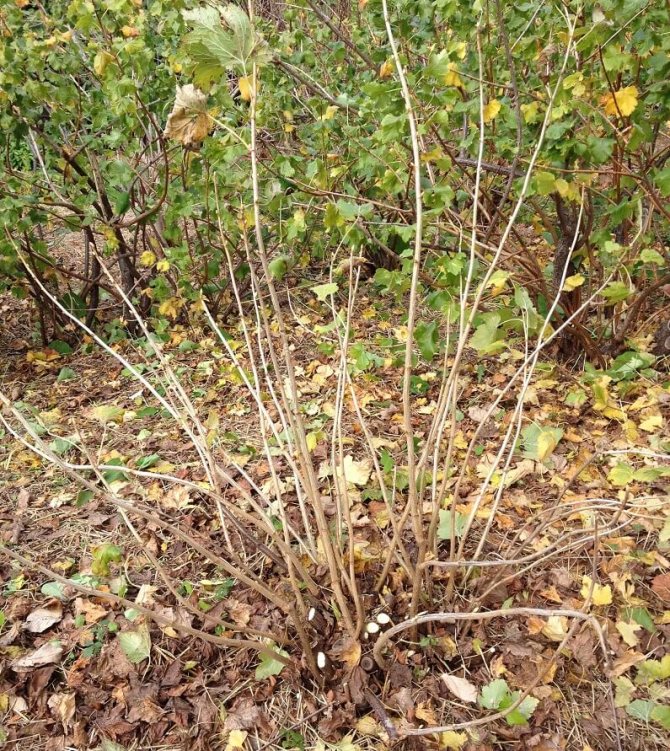

Agrotechnical measures to prepare currants for winter rest are carried out after the harvest has been harvested. Falling foliage is best removed and destroyed immediately so that pests do not settle in it, the foliage also becomes a breeding ground for diseases. And as soon as the currant drops the last leaves, you can start pruning. There are no exact dates, gardeners determine them independently, depending on weather conditions and varieties.
The cessation of sap flow is considered a sure sign of readiness: it is easy to see by breaking the branch.
- First of all, pruning is carried out in Siberia, where frosts can begin in October, the soil freezes much earlier. Currant pruning in subarctic and continental climates is carried out at the end of September.
- In the Leningrad Region, the climatic features make it possible to slightly postpone the pruning period and carry it out in the middle and even the end of October.
- In central Russia, currants are prepared for winter at the end of October or in the first days of November.
These terms are very approximate, since you have to focus on your own experience, and on the condition of each bush, and on weather conditions.
Successful days according to the lunar calendar-2019
According to the lunar calendar, the days of the waning moon, 3 and 4 of its phases, are considered favorable for pruning berry bushes in 2019. In addition, it is worth paying attention to the dates.
- In September, the lunar calendar does not advise pruning, since only the 2nd, 5th, 7th and 9th are among the favorable ones.
- But October is richer on such days: 1, 4, 5, 10, 29 and 30 are suitable for autumn work.
- In November, if the weather permits, you can remove unnecessary shoots on the 3rd, 7th, 8th, and 11th.
Experts believe that the "haircut" on the waning moon will help the bush to branch better, and on the growing one will make the root system stronger.
How to plant red currants and get a harvest
Red currant is a low bush plant with red berries of a pronounced sour taste. Popular in Europe and Russia due to its taste and useful properties. Its berries contain:
- pectins;
- potassium;
- iron;
- vitamins A, E, C;
- malic and succinic acids.
Currants are a natural antioxidant. Regular intake of berries reduces the risk of cancer. Coumarin and furocoumarin have antitumor and analgesic effects. The acids contained in it affect the acid-base balance of the stomach, so eating currants is contraindicated for people with acute hepatitis, gastric ulcer and intestinal ulcer, hepatitis. It should also be used with caution in people with reduced blood clotting.
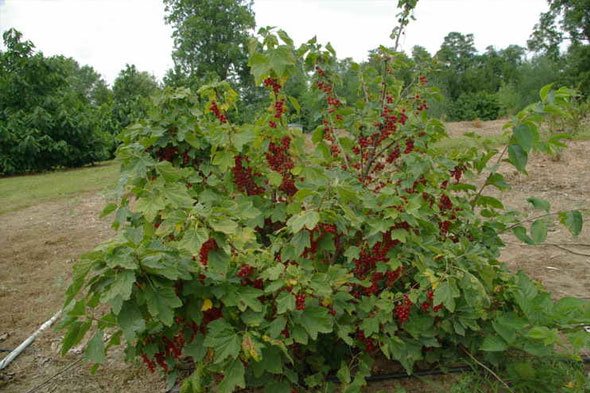

The main types of red currants:
- Common - grows up to 2 m, serrated leaves, light green below, dark green above. Fruiting in June, the average berry weight is 1 g. The berries grow on bunches 5-8 cm long.
- Ice - grows up to 5 m in height.It is mainly bred in China and India. The leaves are small, oval, light green in color. Berries are 4-6 mm in size, slightly sour taste.
- Alpine - up to 1.5 m. Leaves are dark green, glossy. Blooms in May, bears fruit in July. Fruits are medium-sized, light red in color. Widely popular in Europe and Turkey.
When to cut currants - fall, spring or summer
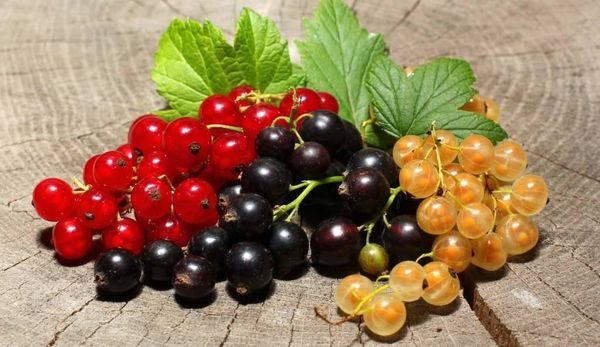

Currant is a berry crop that can be found in every garden. The plant is represented by a bush, up to 1 meter high, some specimens can reach a height of 2 meters. The most common 4 types of this culture:
The first 3 species have been introduced into cultivation and are grown to produce tasty and aromatic berries. And golden currant is more often found in forest belts or it is used as an ornamental plant for the formation of hedges.
From berries of various types of currants, you can prepare:
Regardless of the type of currant, pruning must be done every year. It can be done in spring, summer after picking berries, and in autumn. It is best to stick to autumn pruning times as they are considered optimal.
The benefits of pruning in the fall
It has the following advantages:
- it becomes possible to sanitize;
- when pruning a plant, cell sap is not released and it easily tolerates the procedure;
- there is an opportunity to rejuvenate and form a bush.
Pruning in spring
In the spring, as usual, they carry out a light cleaning of the bushes from frozen and broken shoots. At the same time, the growth of new shoots is stimulated, on which berries will appear. Pruning is performed until the buds awaken, when the culture is at rest. In this case, the temperature should be positive.
If you do not adhere to these rules, then juice will flow from the cut points, which will deplete the plant. This increases the likelihood of developing diseases. The culture will be forced to spend its nourishment on recovery.
Summer pruning after picking berries
Experienced agronomists use summer pruning, explaining their actions by the following advantages:
- an abundance of sunlight stimulates shoot photosynthesis;
- inner branches grow as quickly as lateral branches, which allows you to form a pretty bush shape;
- the risk of contracting fungal diseases approaches zero.
Summer pruning operations should not be resorted to if currants are characterized by weakened growth.
Common varieties in Russia and the Moscow region
The climate of the Moscow region is suitable for growing popular varieties of red currants in the open field.
- Rondom is from Holland. She has an average, but stable yield, dark red berries weighing up to 1 g. The shrub is tall, spreading, ripening occurs in the second half of summer.
- Natalie is a low-growing shrub with burgundy fruits weighing up to 1 g. The taste is sweet and sour, after ripening the berries do not crumble.
- Dutch red is a tall shrub with a rectangular crown. One of the oldest and most widely used varieties in Europe. The berries ripen in August. They are medium in size and have a pleasant sour taste.
- Rosetta is a tall, fast-growing bush. The fruits are large, ripen at the end of July. The average length of the brushes is 10 cm.
Also in the Moscow region, you can plant varieties that are successfully grown in central and central Russia. These are: Roland, Red Cross, Beloved. Among the varieties with an early ripening period, there are: Early Sweet, Cherry Viksne, Chulkovskaya, Jokker van Tets. The largest-fertile varieties include: Baraba, Alpha, Asora and Italian. From frost-resistant varieties are distinguished: Lights of the Urals, Scarlet Dawn, Ural Beauty.
Bush formation methods
The main and usual way of forming a currant is a classic one, when it is grown like an ordinary bush.That being said, it is important to adhere to proper grooming and trimming procedures. Care consists of watering, loosening, fertilizing and pruning.
When pruning is carried out in a timely manner, the result is a fairly lush bush of the usual height, made up of fruiting branches.
There are also more bizarre methods of forming a bush. For example, a red currant bush can be provided with a vase or pyramid shape, which will be very attractive. But the standard method of forming currant bushes has gained great popularity.
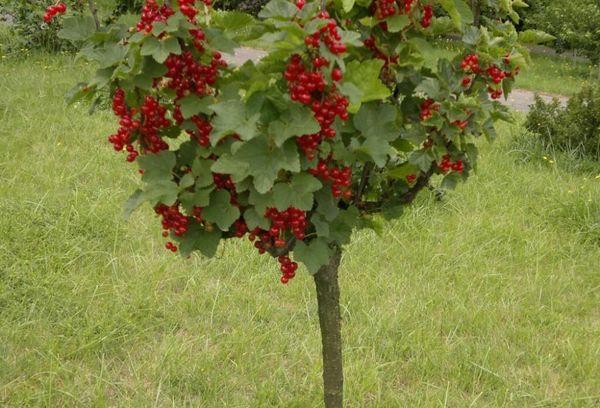

Standard red currant
Standard currant
In this way, you can form all types of currants. The height of the trunk will be about 25 cm.The essence of this technology is as follows:
- In the first year, when pruning, the length of the branches is halved to one of the outward buds.
- The next time, all the shoots growing from the root and the shoots that have appeared on the trunk are cut out.
- A year after completing 1 pruning, cut out everything that has grown on the branches, which are left as the main ones. All other shoots are shortened to 5 cm, and the next summer they are cut to 10 cm.
- In the spring of next year, the length of the lateral processes is left up to 3 cm.
- Further formation consists in reducing the length of the lateral processes to 25 cm and pruning overly thick branches.
By adhering to this formation method, you will get a small, pretty tree with a neat crown. It will look especially nice during the ripening period of the berries.


Michurinsky method of formation
This method is recommended for novice gardeners. Its essence is as follows:
- In the initial 5 years of life, the bushes are not pruned.
- In the fifth year, 50% of the shoots that are affected by diseases, shade the crown and have the greatest age are cut to the base. After pruning, abundant feeding of the bushes is required so that they recover faster.
- In the sixth year, 20 new branches are selected, the rest of the young growth is cut out.
- In the seventh year, the remaining half of the old branches are cut, leaving 10 young shoots. And branches that are 5 or more years old are completely cut out. Places of cuts are smeared with garden varnish.
Currant on a trellis
How to choose seedlings
Currants are propagated by cuttings, layering and seeds. The best way to breed purchased currants is seedlings grown from cuttings.
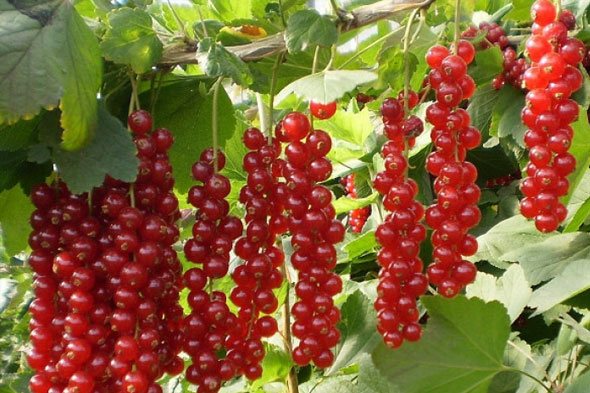

It is better to take two-year-olds, their root system is sufficiently formed for the plant to quickly and easily take root in the open field. Good seedlings should have at least three glued roots (the main roots from which the lateral shoots extend). Those that are sold in pots should be checked immediately upon purchase for a sufficient number of roots. If the root system is poorly developed, additional feeding will be needed.
They may have to be grown in a greenhouse or indoors before planting. The buds should be large, light brown, 3-4 buds each, regardless of height. Currants, as a rule, take root easily, therefore, for a safety net, it is enough to take 1-2 seedlings.
What you need to trim


For a quick and competent pruning of currants, you should prepare and check the serviceability of all the necessary tools.
You may need:
- garden knife, with which they make even cuts - for thin twigs;
- secateurs, with which both thin and medium branches are removed;
- saw - a hacksaw with fine teeth to remove thick branches;
- a hedge trimmer that can cut the thickest shoots;
- a lopper with which you can get to the branches thickening the bush from the middle.
Tools must be taken sharp, decontaminated to minimize damage to the bush. It is recommended that the cut sites be treated with garden varnish or any other means that prevents the penetration and spread of pathogens of infectious diseases.
Preparing for planting: choosing a place and neighbors
Before planting, the soil must be prepared.For red currants, loose loamy soil is preferable. Soils with a high alkali content are not suitable. Currant roots will not be able to take root in such an aggressive environment. A pit for planting is dug a week before the intended landing. The width and depth of the pit is at least 50 cm. The bottom must be closed with drainage: small pebbles or gravel so that excess moisture flows freely into the soil and the roots do not fester.
Next, spread the fertilizer. You can buy special nutrient formulations (potassium sulfate or superphosphate), but it is better to do with natural fertilizer - manure. It is mixed with earth and a third of the hole is filled.
Currant is a light-loving plant. Bushes take root most easily on the southern and southwestern side of the site. It is best to place them along the fence, but this place should be well lit. The distance between them should be sufficient for normal natural ventilation, so the seedlings should be planted no closer than 3 meters from each other.
Red currants do not like close proximity, so other shrubs and trees should be placed 2-4 m from the currant row.
It will not grow next to the apricot.
When to start pruning currants in the fall
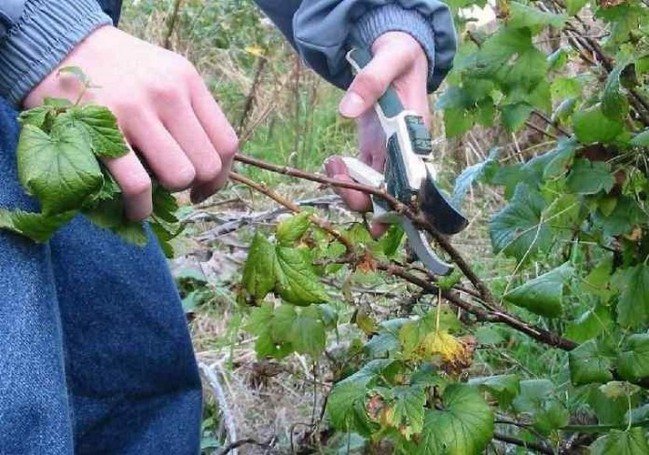

The technology and timing of pruning directly depend on the age of the bush. The highest yield rates are given by shoots that do not exceed 3-4 years old. Branches that are older only draw off food, while not giving berries, so it is recommended to get rid of them. Correct pruning contributes to:
- the formation of larger berries;
- improving the taste of currants due to better access to sunlight;
- prolongation of the fruiting period;
- accelerated growth.
The timing must be right. Autumn pruning is best done on the eve of frost. If you do this in warm weather, the bush can give rise to new shoots, which will then inevitably freeze out in winter.
Planting and leaving
The right time for planting red currants is September and October. It takes root within the first two weeks. At this time, you need to water abundantly and make sure that pests do not start on it. Red currants need regular care: watering, loosening the soil, fertilizing.
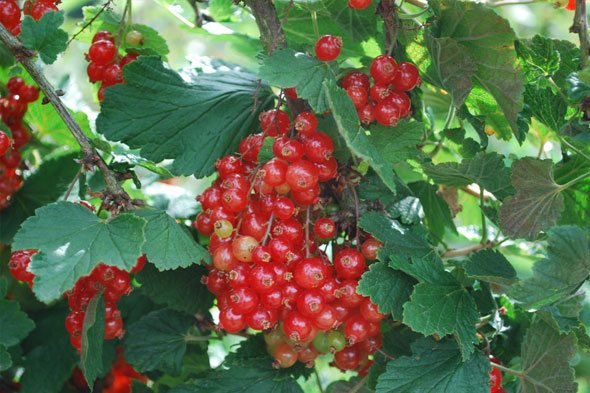

She is very hygrophilous. Currant roots are located close to the surface, they cannot reach the groundwater. The regularity of watering depends on the characteristics of the climate, you need to make sure that the land around the bushes does not dry out. Also, at least twice a month, the soil near the bush should be loosened. Digging depth - 10 cm. Useful for currants and mulching. Mulch is a layer of leaves, peat, or grass that is used to cover the ground around plants to keep the soil moist. In the spring, you can use a layer of newspaper. When the currants bloom, it is better to remove the newspapers so as not to interfere with beneficial insects to process the plant.
For the correct formation of the bush and high fertility, it is important to carry out formative pruning in time. In the first year after planting, the shoots are shortened by half. It is important to keep at least 4 buds on each branch. Further pruning is done every 3 years. If dry, too thick or diseased branches appear on the plant, they must be removed immediately.
Pests and diseases
The main currant diseases that gardeners face are terry and bacteriosis. With the development of terry leaves on young shoots, it becomes much larger, their shape is deformed, and the flowers acquire a purple hue. The reason for terry is a kidney mite. With bacteriosis, leaves and berries are covered with brown spots. Many garden pests are dangerous for currants. It:
- spider mite;
- leaf aphid;
- yellow sawfly;
- glass case;
- blackberry mite;
- goldfish;
- ants;
- caterpillars of the apple moth.
Timely spraying and thinning of the shoots helps to prevent the appearance of most pests.
The nuances of trimming depending on the type: black, red or white
It should be borne in mind that many new currant varieties have a high growth rate, so they may need to prune young shoots more often. The gardener needs to monitor whether there is enough sunlight for each branch and bunch of berries, whether the ventilation regime is observed, whether the shoots do not interfere with each other.
If bushes of red, black and white currants grow on the site, it is worth considering that the red and white varieties have a longer life and fruiting, so when pruning these types of currants, the rejuvenation time can be shifted by 5-7 years.
Video on the scheme of working with red currants
Collection and storage
Currants ripen in summer, it is important not to overexpose and collect them on time. If the berries are eaten immediately after picking, then they can be picked at any time of the day and in any weather. For long-term storage, they are harvested only in dry weather, during the day, when there is no dew on the bushes. The berries harvested after the rain contain too much moisture and will be worse stored. You do not need to cut them off one by one, it is better to collect them with brushes. Red currant berries have too thin skin, it is easily damaged. Collect preferably in small baskets or buckets with a capacity of up to 4 kg, so that the berries are not pressed under their own weight.
Ideally, if the width of the container is greater than the height, and the crop can be arranged in a thin layer.
Berries can be stored fresh, frozen and canned.
Fresh red currants can be refrigerated for up to two months. If you pick the berries unripe, they will lie a little longer. They do not need to be washed before laying. If the summer was rainy, and the berries gained a lot of moisture, they should be dried. To do this, before placing them in the refrigerator, they are laid out in a thin layer on the fabric for several hours. After drying, they are stored in the refrigerator in a container with good ventilation.
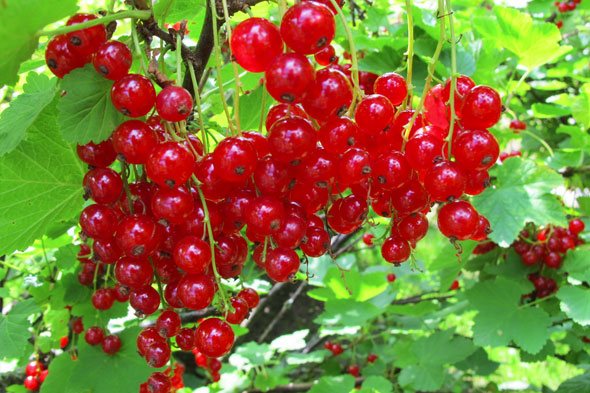

Frozen red currants are stored for up to three months, then they begin to lose their beneficial properties. In winter, it is best to prepare juice or fruit drink from frozen berries; red currants are not suitable for filling in the dough. Therefore, it is more convenient to divide the crop into portions and freeze each in a separate container.
Before laying in the freezer, the berries must be cooled so that they do not burst from the temperature drop. To do this, it is enough to keep them in the refrigerator for 2-3 hours.
Red currant is a healthy and tasty berry. Regular intake of currants in food reduces the risk of cancer and increases immunity during the cold season.
Pruning varieties - pre-planting, anti-aging
Above we examined the timing, and now we will tell you how to cut currants in the fall.
Pre-boarding
The optimal time for planting currant seedlings is the period of time when about a month remains before frost. It is at this time that the pre-planting pruning of the seedling should be done.
On the day of planting, the tops of all its shoots are cut off from the seedling. After that, all branches should have 2-3 vegetative buds.
Such pruning will lead to the fact that at the end of 1 year of life, about 5-6 shoots will appear in the currant bush.
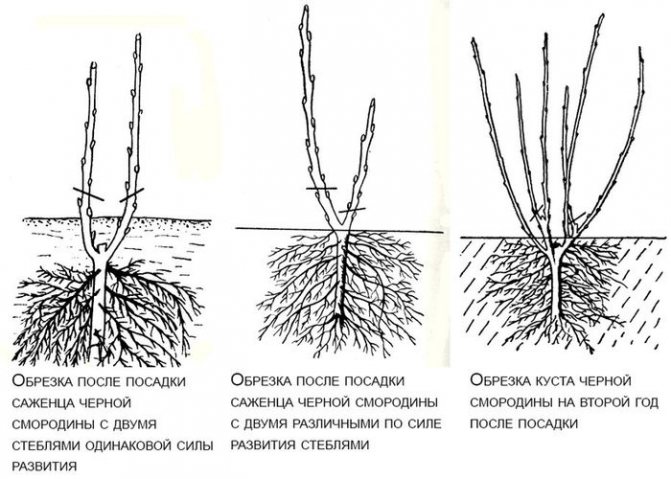

For rejuvenation
In general, such pruning is carried out in order to increase the life of the bush. Bushes that are 5 or 6 years old are subjected to rejuvenation.
In the process of performing the procedure, the following steps are taken:
- old branches are cut to the base;
- young tops are cut along with old stems;
- cut branches growing down;
- cut off parts of the bush affected by diseases, as well as those that have broken;
- on the shoots of the last season, the upper part is cut off;
- leave from 3 to 5 of the most promising new shoots.
Technique, terms and rules for pruning bushes for the winter
Caring for black currants in autumn is much more difficult than for red ones. The fact is that the fruits are formed on one-, two-, three-year-old shoots and you need to form the currants in such a way that there are an equal number of them.Only then can you achieve abundant fruiting and a much larger yield. Every year, the bush forms zero shoots, shoots and continues to grow already formed branches. The first "categories" must be removed immediately, the second must be pruned in order to pin the growing point and allow the branches to grow to the sides on the crown. Let us consider in more detail what to pinch, when to do it, which shoots must be completely removed.
- The first year you will have a seedling, from which 1-2 branches depart. There will be no shoots, one-year shoots practically do not develop. We wait until autumn and pinch the growth point, so that next year these stems grow to the sides and give much more berries. From one branch you should get 4-5 shoots to the sides. It is imperative to carry out work at the end of autumn, when all processes in the plant stop.
- When the root system grows strongly, there is a lot of overgrowth, which must be removed at the root in the fall - these shoots will not be able to overwinter, they will only be a burden. It is necessary to form no more than 18 stems, only then the berries will be extremely large, sweet, well ripened. Excessive branching is the first reason for low yields. Also watch out for one-year branches on last year's shoots - there you need to pinch the tops and align them in height with the old ones.
- The third year of pruning is to remove the cap on the berry plant. It is necessary to cut out dead old stems, since they are a breeding ground for fungi and many other diseases, remove them at the very root, after which the branches are burned. "Young growth", which did not have time to mature before the end of autumn and become stiff, must also be removed, since frosts kill it, and many bacteria and insects start in it in the spring.
- The fourth and all subsequent years, pruning is very simple - we just pinch the growth points, cut out the dry stems. Remember that if the black currant does not bear fruit after the fifth year of growth, care in the fall should include cutting out 5-year-old branches.
Caring for red currants in the fall is a process with slightly different rules. Its pruning is easier due to the peculiarities of this variety. It bears fruit not on perennial shoots, but on the pillows of the first year. That is, one-year-old shoots should not be pinched. In all other respects, there are practically no differences. The bush is formed in the same way, only it will be much taller and not as spreading as in the case of its "black" brother. The number of branches can also be up to 20 pieces, but it is recommended to keep no more than 15, so that the load is small, there is always enough nutrients and minerals. With a lack of them, the fruits will not only be less, but their size will not please the gardener.
Pruning is not only an aesthetic procedure and increased yields, but also the safety of your plantings. It is known that 80% of all insects and fungi remain in the apex of the stem, from where they enter the soil for the winter or remain until warming. If you don't cut them, you risk spending a lot of money and time spraying the leaves for spotting, fungal and viral diseases.
The cut must be made accurate, so buy only a high-quality pruner. Any inaccuracies in the cut can cause large wounds to the bush, which take a very long time to heal and slow down the development of the entire plant. The pruner should cut the paper, in which case it can be considered suitable for working with currants.
As for the timing of garden work, they may differ in different latitudes. Autumn care for currants can begin from September 15 and end on November 20, it is desirable that the juice circulation completely stops. That is, 2 weeks before the first frost and not earlier.
Caring for bushes after pruning
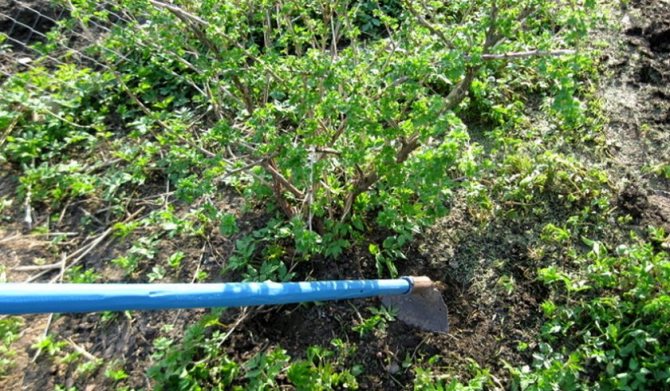

After the autumn pruning, the bush must be prepared for a dormant period.
- The trunk circle is well spilled with solutions of nutrient mixtures.
- The branches are treated with lime, karbofos, colloidal sulfur or Bordeaux liquid.
- The soil is loosened, peat or sawdust is introduced into it for insulation.
If winter is expected to be harsh, it is important to pour at least 20 liters of water under each bush, providing the plant's root system with sufficient moisture.
These measures are required both for the currants of the first years of life, and for the old ones, after the rejuvenating pruning of the bushes.
Autumn pruning of currants is an important procedure that requires experience, which must be carried out taking into account the climatic conditions and the variety of the bush. If the technology is observed, it helps to achieve good yields for 8-10 years and longer, makes the berry more accurate, and prevents the appearance of diseases and pests.
Fertilizing and feeding
If you have black currant growing, caring for it in the fall will be quite large-scale. Currants draw out all the potassium, phosphorus and magnesium from the soil, so it is necessary not only to make up for their deficiency, but also to make a reserve for the next year. Let's take a closer look at the fertilization process.
- The first step is to introduce "long-playing" components. That is, phosphorus and potash fertilizers. They do not affect growth, their main purpose is the quantity and quality of berries during the fruiting period. The root system begins to actively absorb them at the end of May, increasing the size of the fruits, so even with a heavy load on the plant, all the berries will be ripe and sweet. It is better to use concentrated granules.
- Mullein, chicken droppings. Components necessary for the proper growth of the vegetative mass, which must be added before frost. In 3-4 months they will decompose into simpler elements and will begin to act at the moment when it is extremely necessary.
- Ash. It is applied not only for fertilization, but also for mulching the soil, as when growing watermelons, so that moisture in the winter lingers as best as possible under the bush, the earth does not crack in the spring, as is often the case under garden bushes and trees.
We have already figured out how to care for currants in the fall, now we need to consider some of the nuances. In order not to burn the plant, not to harm the root system, it is necessary to follow several basic rules of the gardener. Let's take a closer look at them, we will understand what in no case should be done in the fall.
- Never apply concentrated chicken droppings directly under the bush. This can burn the plant, completely destroy the vegetative mass. The concentration of nitrogen in the droppings is too high, it takes about 3 months for it to disappear, and only safe components remain. Step back 25 centimeters from the last stems and fertilize. This also applies to the mullein, only humus, non-concentrated fertilizers (diluted with water) can be applied under the bush.
- Can't fertilize too earlyso that the circulation of the sap in the plant does not start prematurely. Otherwise, it threatens the plant with death at the first frost.
- It is impossible to add components in excess of the norm indicated on the label, since an excess can slow down the bush in development, even with abundant watering, it will remain "in place" for a long time in the spring.
If you follow all the rules, the plant will not only overwinter, but will also delight you with excellent berries. In the spring, it will be possible to fertilize a little with foliar dressings to stimulate growth, accelerate development.
Why do you need a pruning procedure
Currant is a plant that is undemanding to growing conditions, the start of its intensive development begins immediately after planting a seedling. However, after 3-4 seasons, a drop in the yield of berries can be observed, and the bush loses its shape and attractiveness. The reason for this is the lack of trimming.
This is because generative buds appear only on young branches less than 5 years old. Perennial branches take food, but they do not give a crop - they should be disposed of.
Over time, dried branches appear on the bush, which interfere with the normal development of new promising branches. With the help of pruning, you can extend the life and fruiting of the bush by 5 years. And all these 5 additional years, the bush will give generous yields of berries.
Pruning bushes has the following goals:
- cutting out parts of the bush affected by diseases and pests;
- an increase in the total yield and size of berries;
- resumption of the growth of new shoots;
- improving the taste of berries;
- optimal power distribution;
- an increase in the total fruiting period;
- giving the bush an attractive shape.
Novice gardeners may think that the technique of pruning berry bushes is not easy to master, but it is not.
Bending branches
If you think that you have already figured out how to care for black currants and nothing else is needed, you are deeply mistaken. The bending of branches is something that should not be overlooked in any situation. There are varieties that can withstand up to -45 degrees of frost, but even they are not immune from freezing if there is no snow cover or are in a draft. Better to reinsure yourself and spend 15 minutes preparing the plant for frost.
Bending can be done in several ways. The most popular is to collect branches in a bunch, tie a cobblestone to them. Bend them from the center of the bush to the sides, so as not to break or twist the stems. It is best to do this at the end of October, when the material is still not so brittle and will easily twist into a "ram's horn" For those who correctly performed the autumn work in the raspberry grove, this will not be difficult - the process is similar.
The second method of bending is a rod. A stick or rod is hammered in the middle of the bush, to which all the stems are tied, wrapped with agrofibre or other insulation. The efficiency is much less than that of the first method, but there is an advantage - it is not necessary to spend a lot of time and effort. Just 1 rod and one rope are enough (it is better to take a thick nylon thread).
You can bend to one side, but this should only be done when the juice circulation is large, since there is a high risk of stem breakage. If everything is done correctly, then even 5 centimeters of snow will be quite enough to completely cover the entire plant, keep it warm.
Remember that it is impossible to keep the plant under cover for too long, it will be necessary in the spring to open it (or unwind) as soon as possible, to let it develop normally in an upright position. Also, you can't bend it down too early, when the leaves have not fallen. A lot of fungus will immediately form on them at high humidity, it will remain for the second year, creating many problems for you. But if you adhere to these simple rules and recommendations, then the next year the currants will more than justify your torment and the time spent!
Step-by-step instructions for pruning
About a month before the arrival of frosty days, the plant smoothly goes into a dormant state. Below we will tell you what you need for the procedure and how to prune currants in the fall for beginners. When planning the cutting of individual branches, it should be understood that some of them may freeze out in winter.
Required tools
All tools used must be sharpened and disinfected to prevent contamination of healthy bushes with infection.
For the operation we need:
- Pruner. They cut out thin branches and middle-aged shoots.
- Garden knife. When applied, neat and even cuts are obtained, but it can only work on thin branches.
- Hacksaw. It should be with small teeth. She cut off thick, perennial branches.
- Lopper. This tool has elongated handles. It is convenient to use it if you need to remove a branch in a hard-to-reach place.
- Brush cutter. This tool is suitable for cutting branches of any thickness, as well as for shaping the bush.
When choosing a suitable tool, one must consider not only its sharpness, but also its ease of use.


Before and after pruning
Carrying out currant pruning in the fall for beginners
It is better to perform the work in stages, adhering to a certain algorithm.
- free the plant from dried and diseased branches;
- cut out shoots that did not ripen over the summer and remained green;
- remove intertwined branches growing from the middle of the bush and those that lie on the ground;
- remove the affected and deformed processes.
At this, pruning at the first stage can be considered complete and you need to move on to the second - rejuvenating stage.
- remove branches older than 5 years (black currant) and more than 7 years old (other types of currants);
- make all shoots of this year shorter by a third;
- cut off pagons on the plant that are older than 3 years.
This completes the pruning of the second stage.
In this - the third stage of pruning - actions are performed to support the bush. They are resorted to if the currant bush is distinguished by excessive thickening.
- central branches, in order to better illuminate the entire bush;
- if there are many fruit-bearing pagons, you can cut out the shoots of the current year.
However, do not get too carried away with thinning the bushes, cutting out a large number of central branches in one go. Because of this, the plant can get into a lot of stress and will be sore for a long time.
Important! When planting a currant seedling, all branches must be cut off from it. After such a shortening, trimming of shoots with 3 vegetative buds should remain.
A useful video on how to cut currants in the fall from the Sadovy Mir channel:
Pruning black currants by years of life
To give the young bush the proper shape and then maintain it in this condition, pruning work is performed annually. As the plant ages, the pruning technique will be slightly different.
How to prune black currants in the fall, depending on the year of life:
- 1st year. All branches are made shorter, leaving sprouts no more than 15 cm.
- 2nd year. The 5 best strong shoots are selected, the rest are cut at the base. At this stage, the foundations are laid for the further formation of the bush.
- 3rd year. It is forbidden to touch the branches of the 1st and 2nd year. Of the new shoots, 5 of the strongest are left, which do not grow inside the bush. The rest of the growth of the current year is cut at the root.
- 4th year. All actions are performed in the same way as in the previous year.
- At 5 years old, you need to start anti-aging pruning. Old branches, on which few berries are formed, are cut at the root, which stimulates the regrowth of new shoots.
Video: pruning black currants in the fall
Tools and other inventory
Pruning tools should be sharpened and sanitized to ensure neat cuts without spreading infection to healthy bushes.


To cut a currant bush, you will need:
- Garden knife. With its help, it is possible to make even cuts. Apply only to thin branches.
- Pruner. For the removal of thin and medium-aged shoots.
- Hacksaw. Take a saw with small teeth - for cutting thick branches.
- Brush cutter. Cope with branches of any thickness. Allows you to give the bush the desired shape.
- Lopper. Tool with long handles that allow you to reach branches in hard-to-reach places.
How to trim properly
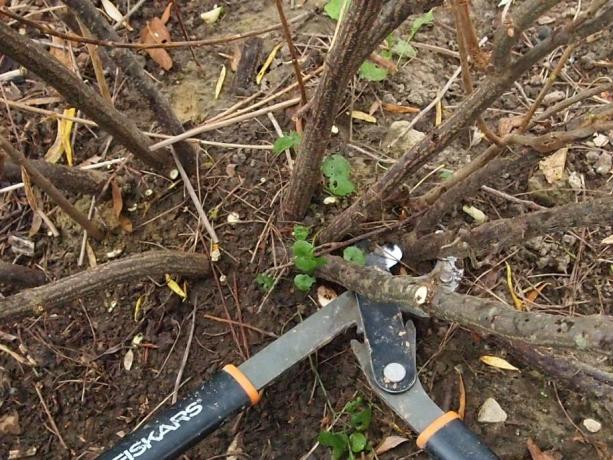

When pruning currant bushes in autumn, it is necessary to get rid of:
- thin and weak shoots;
- sick and withered branches;
- branches that do not bear fruit;
- young shoots that thicken the bush too much.
Pruning rules
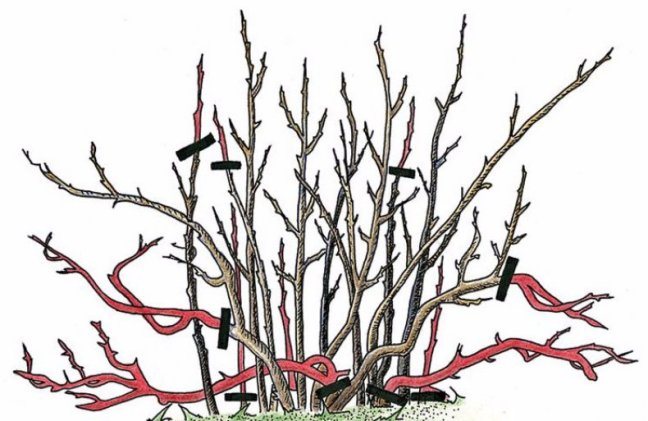

Slices must be done with a sharp instrument, 0.5-1 cm above the outer kidney. Places of cuts must be treated with garden pitch. You cannot prune on the bud, otherwise the remaining shoot will dry out completely. The branches should be cut near the ground. If you leave stumps only 2-3 cm high, they can start growing again, awakening dormant buds.
Never break off branches with your hands and do not use an ordinary knife - after such a barbaric "pruning" the plant will have to recover for a long time.
First, dry and old branches should be cut, then unripe green shoots should be removed. After that, remove all the branches that grow to the center, intertwine with each other, unnecessarily thicken the bush. At the last stage, they get rid of diseased branches.
According to the rules, you cannot remove many shoots at a time - this will greatly weaken the plant, and it may die. It is permissible to cut out at a time no more than one third of the skeletal branches.
Rejuvenation of an old bush - scheme


The first anti-aging pruning is carried out in the fifth year of the life of the black currant bush. During it, half of all shoots are cut out. This number should include old, diseased and crown-thickening branches. After such a radical pruning, you need to give the plant food, this will help it recover faster.
In the next season, 20 of the strongest branches are left from the growth, the rest of the branches must be removed. A year later, the rest of the old shoots are cut out, and only 10 are left of the young branches. Thus, in 3 years it will be possible to completely rejuvenate the old bush. Five-year-old non-fruiting branches should be cut completely.
What to do with a young bush


At the earliest stage, it is important to form the bush correctly - this will help to obtain the maximum yield. The first formative pruning is carried out immediately after planting the seedling. The tops of all shoots are cut off, leaving 2-3 buds on each. In order for the growth of a young bush to be good, no more than 4 shoots are left on it. It is recommended to prune a two year old shrub in the middle of summer. The tops of the shoots are shortened by 10 cm - this gives the shrub new strength.
For active growth in the fall of the same year, the most powerful young branches are left, and the rest are removed. Thus, the skeleton of the bush is formed. Side branches are best removed because they obscure other shoots and prevent them from developing. A three-year-old black currant bush has 15 to 20 branches growing from the ground. Autumn pruning involves the removal of underdeveloped defective shoots.
Rules and methods for pruning currants
Before pruning, you need to figure out how to properly carry it out. Remember: during pruning of currant shoots, in no case should the buds be damaged. This means that the cut should be approximately 0.5 cm above the kidney, while the angle of inclination must be strictly observed: make sure that it is no more than 50 degrees.
Attention! When pruning young (and not only) shoots, remember that the cut should not touch the bud or be near it, otherwise it may dry out. But at the same time, try not to place it too high, because in this case the part of the branch located above the bud will also dry out with a high degree of probability.
Currant bushes are pruned in the autumn-spring period, and annually. But for the first time, this procedure must be carried out at the time of planting a young seedling. So, all shoots of a planted plant should be shortened by 15-20 cm (no more than 3-4 buds should be left on the surface). Moreover, the weaker the growth of shoots, the more they should be cut off.


The annual autumn pruning of currants involves the removal of all diseased and damaged shoots. Any branches that are too low to the ground should also be removed. If the plant is not very well developed and the growth at the end of the year is very weak, this is a good reason to cut them almost to the very ground. If the shoots turned out to be very strong and healthy, you can shorten them a little, thereby provoking an active growth of second-order shoots.
There is one important detail to keep in mind when pruning currant bushes: the type of currant.For example, red currant has its own characteristics and differences. The structure of her bush is somewhat different than that of black currant: it has fewer drooping branches, which are usually cut off, and it needs a lot of light, so it is necessary to remove all branches that shade the fruiting parts of the plant.
In addition, red currants are rejuvenated much less often, and only those branches that have already "failed" (have ceased to bear fruit). Remember: only those non-fruiting branches that have already reached 7 years of age should be removed in the autumn.
On a note
Well, and finally, some valuable tips from experienced gardeners to help you grow a strong plant and maintain its health from year to year:


- In the autumn period, obligatory pruning of diseased and damaged tops of the bush is carried out. If a currant shoot needs a lot of pruning, it is better to remove it altogether.
- In order to trim the shoots correctly, it is necessary to accurately determine their age visually. So, the darker the bark on the currant branches, the older they are.
- Carrying out autumn pruning, you can provoke active fruiting of the plant if you remove all the old shoots (over 3 years old), as well as those that gave an increase of less than 20 cm.
- Old branches must be cut very carefully and, most importantly, correctly: their height should be somewhere at the level of the soil (no higher than 3-4 cm above the ground). This is done in order to enhance the growth of young shoots.
- All sections (regardless of their age) should be carefully processed with garden varnish.
That's all the subtleties that you need to know in order for the autumn pruning of currant bushes to be carried out correctly. Good luck!
Caring for black currants in the fall


Even if the bush has grown well over the summer, looks healthy and strong, it still needs attention. After all, there are long cold months ahead, which are a test for all plants, and black currant is no exception. If you do not provide the shrub with proper care, in the future you can face the incidence of the crop, a reduced yield, the formation of small and sour berries.
In addition to pruning, the plant needs fertilizing in the fall, water-charging irrigation and proper preparation for winter. But first you need to pay attention to the bite zone. From under the bush, it is necessary to remove fallen leaves, young twigs, remaining trimmings and various debris. All this waste can be burned to obtain an excellent natural fertilizer - wood ash, which can be used for fertilizing.
After the bite zone becomes clean, it is dug to a shallow depth. Try not to go deeper into the soil layer more than 7-8 cm, then you will definitely not damage the roots. After digging, pest larvae and pathogenic microflora will appear on the surface, which will die during the winter from frost, which will reduce the risk of shrub diseases. At the same time, the structure of the soil, its water and air permeability will improve.
Top dressing


The main rule when applying fertilizers in the fall is that they do not contain nitrogen. This chemical element activates the growth of young shoots, which is completely inappropriate in the autumn months. New branches that have appeared at this time of the year will not be able to ripen until winter and will be prone to freezing. That is why it is strictly forbidden to introduce fresh manure in the fall containing an excess of nitrogenous compounds.
Experts believe that the best feeding option is a mixture of 1.5 tbsp. l. superphosphate and 1 tbsp. l. potassium sulfate. This amount of fertilizer is calculated for one currant bush under 5 years old. For older plants, the dose is doubled.
Watering
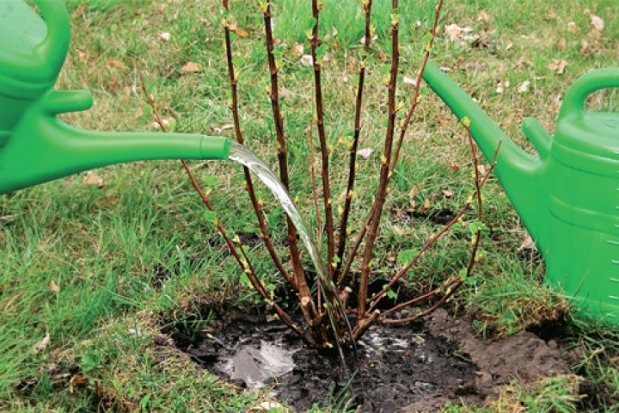

In autumn, experts recommend carrying out water-charging irrigation for successful wintering and active growth of currants in early spring. Its principle is based on the introduction of a large amount of water that penetrates into the soil to a considerable depth. In this case, the soil will freeze through gradually and, conversely, remain frozen during the thaw period in winter.
This technique gives the plant the opportunity to develop suction roots and maintain a supply of moisture in case there is not enough snow during the winter and the shrub receives less moisture in the spring. Water charging is carried out after harvesting in September, when the bush begins to actively lose leaves. 3-4 buckets of water are poured under young bushes; for older plants, the moisture rate is doubled.
It is necessary to water the currants in such a way that the water is absorbed in the bite zone, and does not spread beyond its limits. It is better to carry out such watering by sprinkling. When doing this, take into account the weather conditions. If autumn is rainy, the amount of introduced moisture is reduced by half, and for clayey dense soil, the rate is reduced by 3 times.
Preparing for winter
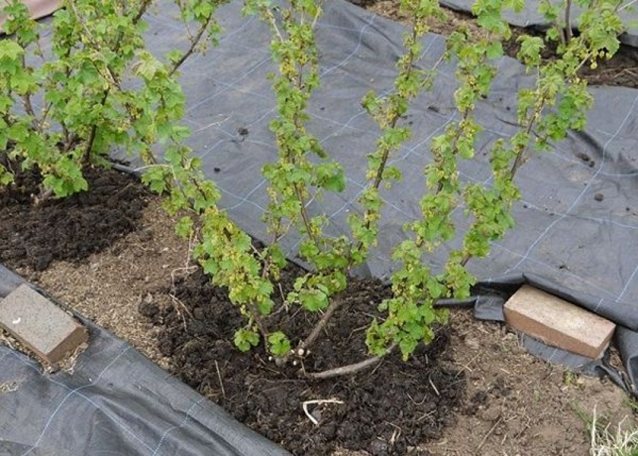

Black currants can easily endure 25-degree frosts, but this does not mean that they can not be prepared for wintering. After the fertilizers have been applied, it is necessary to add soil under the bush. The land must be fertile and fresh. It is well sealed so that not even the slightest voids remain. In addition to the soil, half a bucket of rotted manure is mixed.
This should be done no earlier than the end of October. The manure then serves as a mulch layer to help protect the roots if frost hits too early before snow falls. Fallen leaves, sawdust, cardboard sheets can also be used as mulch. Just do not forget to remove this "insulation" in time in the spring so that the sun can quickly warm the earth with its rays.
At the same time, it is recommended to carry out preventive treatment against fungal diseases. For this purpose, currants are sprayed with Bordeaux liquid in a 3% concentration. It is necessary to process the bush carefully so that the drug gets on each branch. If at the same time the chemical saturates the ground, then nothing terrible will happen. On the contrary, additional soil disinfection will occur.
In those regions where the frost in winter exceeds the 25-degree mark, the branches need to be bent to the ground and secured. It is most convenient to group them into a bunch, cover with a board and put a few bricks on top. In an area where the temperature drops below -35 degrees, gardeners even have to add a little drop in the branches. It is enough to throw a layer of soil 10 cm thick on top so that the shoots do not freeze. After the snow falls, throw it over the currant bush and compact it slightly.
Instrument preparation
To carry out high-quality pruning, you need simple garden tools, which every gardener probably has: a pruner, a file and a means for healing cut points. The tools must be sharp so that the cut edges are uniform. Tousled edges can become a habitat for pests. Old branches that have lived for several years may require the use of a file. So that the hemp remaining after pruning does not rot and become a place for the development of diseases, obsolete branches must be removed at ground level.
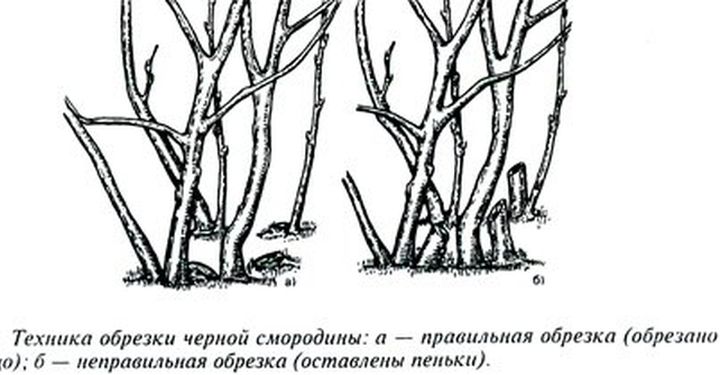

The place of the cut is easily affected by diseases, in order to protect the plant from them and to speed up healing, garden var is used. They are treated with a wound, immediately after the procedure, such treatment significantly reduces the likelihood of infection. Before starting work, you should carefully examine the bush and determine the scope of future work. Having correctly distributed the scheme for cutting currants in the fall and highlighting the branches that should remain. After the work, at least 1/3 of the original volume of the bush should remain. Careless or over-pruning of currants in the fall can weaken the plant or lead to its death.
Features of preparation for winter
Depending on the variety of currants, autumn care and preparation for winter may differ slightly.
Black currant


Black currant pruning includes: sanitary (standard for all varieties of culture) and basic.Old shoots that need to be cut out when rejuvenating a shrub are branches older than 5 years. They can be distinguished from younger ones by their dark wood color and thickness. To stimulate branching, the shoots are shortened by 1/3 of their length. After rationing the number of shoots, no more than 6 ... 8 pieces should remain. Black currant responds well to pre-winter watering.
Preparing black currants for winter: video
Red currants
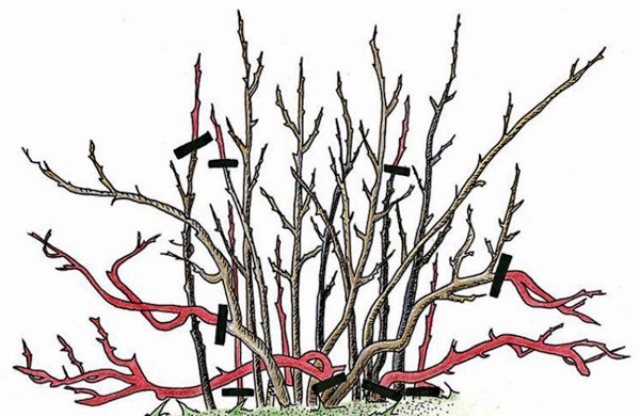

The main shaping of the red currant is different from the cutting of the black one. In this case, shoots that have reached the age of 7 ... 9 years are called old branches. A strong shortening of the shoots left after sanitary cleaning reduces the yield of red currant bushes - this variety forms a greater number of fruits precisely at their tops. The optimal number of shoots remaining after cleaning is considered to be 10 ... 12.
White currant
The features of preparing white currants for winter are similar to those given above for red varieties of culture.
Benefits of Autumn Pruning
There are many disputes about the most favorable time for pruning, due to the diversity of the climate in Russia.
In the spring. The downside is the tight deadlines. They should be carried out before the formation of fresh buds, which is not always realistic due to natural conditions. Cutting during sap flow is fraught with a violation of the development cycle of the bush. But such a correction allows you to correctly assess the degree of pruning, because the branches are not hidden by the foliage.
In summer. Shearing is done only in extreme cases - if it is necessary to eliminate infected shoots or to stimulate fruiting by pinching the shoots for a maximum of 2 buds. However, this procedure has more negative consequences:
- wounds remain moist for a long time, which helps to attract pathogenic bacteria;
- the currants may not have enough strength to grow new shoots, so the next season the risk of getting a weakened berry increases;
- young shoots do not have time to prepare for winter and die as a result.
In the autumn. Currant pruning is carried out exclusively after the sap flow has stopped, which allows the culture to calmly transfer the procedure and enter the hibernation period without a stressful state. In case of uncertainty, it is allowed to cut the branch - if drops of liquid are noticeable, the date of the haircut is shifted by a week.
Provided the procedure is correct, new shoots are stimulated, which by spring are successfully replacing unproductive ones. In addition to rejuvenation, this relieves the plant of parasites that can penetrate the soil before the onset of frost and subsequently harm healthy bushes.
Types of pruning
Young currant bushes grow quickly - after 2 years they grow and begin to bear fruit. After 4-5 years, the shrub becomes overgrown, loses its shape, the berries become smaller. The plant needs adjustment. There are several types of trimming. Depending on the purpose, it is divided into formative, rejuvenating, sanitary.
Formative
To achieve high yields, the shrub is formed by pruning. It is necessary for the proper development of the plant, preventing thickening, creating better conditions for the growth of new shoots. Pruning of a developed, fruiting plant is carried out annually.
Reference. A fruiting shrub should have 12-13 branches of different ages.
For the formation of such a plant in three-year-old bushes, 3-4 developed and evenly spaced branches are left. The purpose of the formation is to create a bush with a wide base for lighting and ventilation of the central branches. Thickening of the plant can lead to the formation of powdery mildew. In thickened bushes, berries ripen only at the tops of the stems.
With subsequent pruning, strong young shoots are left, which grow closer to the edge of the bush. At the same time, the central shoots are removed, expanding the base of the bush. Weakened, superfluous, tilted to the ground, diseased shoots are also subject to removal.
Branches older than 5-6 years cease to bear fruit, they are also cut out.
Rejuvenating
Rejuvenating pruning is done to increase the lifespan of the shrub. It is made after 8 years of plant life - at this age, the yield is at a low level.
Attention! When carrying out the procedure, it is important to learn how to distinguish annual shoots from older branches. The young shoot has no branches, it is light green in color. Branches older than two years are dark brown in color, they have branches.
During the rejuvenation procedure, old, dried stems are cut to the ground, dusting the cut with wood ash.
Anti-aging crop pruning can be carried out partially, within 2-3 years, or dramatically, at a time. The first method is used for 8-10-year-old shrubs, the second - for old and diseased plants.
During partial pruning, remove a third of the old branches. First, cut out dry, sore areas. The next year, remove unnecessary, improperly growing branches. In the third year, young healthy shoots will grow in place of the removed old branches, the fruiting of the bush will increase.
If the plant is older than 8 years, most of the branches have dried up, complete rejuvenation is carried out. In this case, all branches are cut to the base, and the cuts are processed with wood ash. The rest of the ground part is mulched with sawdust, straw, peat to prevent freezing in winter. With the onset of spring, the roots are watered with "Fitosporin" and fed with organic matter, re-growing a young bush.
Sanitary
Broken and damaged branches are cut out during sanitary pruning. Sick parts of the bush affected by pests are removed. In case of severe damage with powdery mildew or glassworm, the stems are removed, cut out at the very base, and burned. If the tops of the plant are damaged, they are cut off, capturing a small section of a healthy stem.
Pruning bushes by years of growth
If you seriously deal with your garden, berry, vegetable garden, "summer residents" make various plans, schemes, outline long-term programs. As for currant bushes, autumn pruning is done every year in different ways:
- After one year of seedling growth, the branches are shortened to 10-15 cm, leaving 3-4 buds above the soil surface;
- When pruning a two-year-old bush, 3-4 shoots are left, and all branches of the current year are given to the root. Simultaneously a bush is being formed;
- In the third year of growth, 1 - 2-year-old branches are not cut off at all, but 5-6 shoots from the young shoots of the current year are left outside the bush, and the inner ones are cut off at the root;
- In the fourth year, the operation of the previous, third year is repeated;
- By the fifth, sixth year of growth, the yield of old branches is significantly reduced, they are cut at the root, thereby giving room for the life of new shoots.
When pruning any fruit shrubs, you need to use a sharp tool, and make the cuts in the direction of the outer bud, a little higher than it, you cannot cut off the shoot on the bud, otherwise it will die.
Increased yield
Having carried out work on the autumn pruning of currant bushes, it is too early for the gardener to calm down. It is necessary to perform operations to increase the yield of the berry in the next year, which is affected by:
- The ability of the bush to form young shoots;
- The ability of the kidneys to awaken.
To do this, you need to cut in half or a third of the tops of the branches. The cut should be slightly higher than the kidney. The highlight of this action is that the cut is made above the bud, directed outward, from the center of the bush.
Currant bushes
For proper pruning of currants, you need to have an idea of the structure of its bush. It is very important to understand which twigs bear fruit best, so as not to remove them with the arrival of autumn and not to lose the harvest.


Novice gardeners can clearly see the difference between the fruits of black and red currants, they can easily distinguish one plant from another due to the bright aroma of the leaves or its absence.But why currants should be cut in different ways, they do not always understand. Watch a video that answers this and many other questions:
Black or red currant is a shrub up to one and a half meters high, depending on the variety, with a spreading, compact or compressed crown. In some cases, the plant reaches 2.5 m, but such sizes create difficulties in harvesting, therefore, selection follows the path of creating less vigorous cultivars.
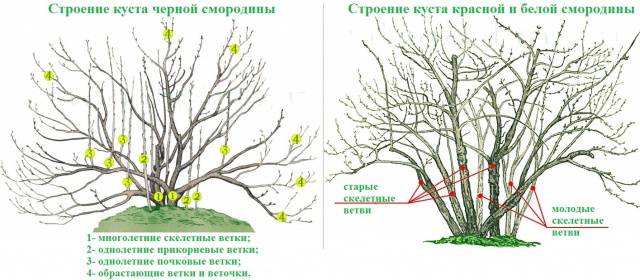

Black currant
In one place the black currant bush grows well and bears fruit for 15-20 years, and with good care - all 30. It consists of a large number of uneven-aged branches. The most powerful are skeletal, they grow from buds located on an underground stem, and are called zero-order shoots.
At the base of the bush there are dormant eyes, which do not germinate in the first years after planting the currants. Above, there are buds that form lateral, mainly vegetative shoots of the second and third order. It is on them that short branches of ringlet-fruit grow, giving a crop for 2-3 years, and then dying off. Most of them are located at the top or outside of the bush.
On five-year-old shoots, there are no berries or there are very few of them, and the currants that have set up become smaller. Crop processes are displaced to the periphery, growing either from basal buds, or from dormant ones located at the base of old skeletal branches.
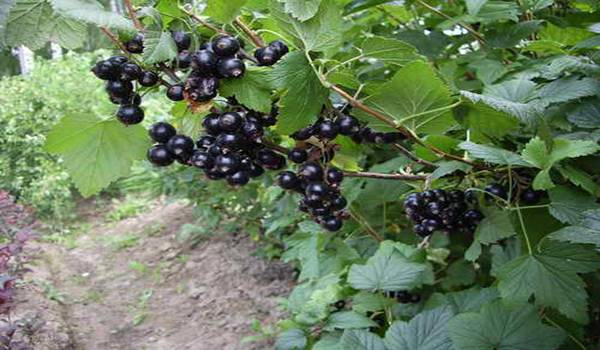

Red currants
Red and black currants belong to different species, but the same genus, in turn, belongs to the Gooseberry family. They have a lot in common, but the differences are mainly in the aroma of berries and leaves, as well as the lifespan of the branches. The difference between red and white currants is only in the color of the fruit. They require the same care, growing conditions.


Red currant forms a less spreading bush than black currant, it is more winter-hardy, less likely to get sick. In general, this plant is not capricious, it is easy to care for it even for novice gardeners. Red currant pods are collected together in several pieces and evenly distributed throughout the bush. They are more durable than black varieties, each bears fruit for 4-5 years, and on fertile soils and with good care - up to 8. Skeletal branches can grow for 6-8 seasons, only then they need to be removed.
Read also: Cabbage Gloria: description of the variety, characteristics, cultivation and care in the open field
Useful Tips
Below are some useful tips for beginner gardeners that will help you to carry out all the autumn activities for caring for currants and, if necessary, cover them.
- Only a well-sharpened, sharp tool should be used for trimming. When cutting out thick shoots, the places of the cuts are covered with garden pitch.
- Top dressing of currants is carried out only with fertilizers, which contain large proportions of potassium and phosphorus. The introduction of nitrogen in the autumn will provoke an active growth of the shoots. As a result, the plant will not have time to prepare for winter, as it will spend energy on building up green mass, and will lose its frost resistance. Nitrogen-containing fertilizing ceases to be applied by the beginning of September.
- Feeding with fresh manure and chicken droppings is carried out after the onset of frost. During the winter, all excess nitrogen will evaporate, and in the spring the fertilizer will become easily digestible for the currants. The effectiveness of such feeding is observed in areas where melt water does not stagnate in spring.
- Bend currant shoots to the ground with extreme caution. You can do this only before the onset of frost, when the branches still have flexibility. You can fix them with bricks or tiles. In no case should a metal load be used - it has good thermal conductivity, therefore it will transfer cold to the branches, and they will freeze.
- Another way to prepare for wintering is to throw the shoots with earth.Despite the fact that this method is rarely used, it is considered very effective at temperatures down to -350 C.
- If there is a need for additional protection of the currants from frost, you need to use a dense material that allows air to pass through. Therefore, film will not work here. Insulation (for example, mineral wool) is laid in the voids between the material and the branches. In such a "fur coat" the shoots can withstand temperatures up to -500 C.
- If it is possible to get to the summer cottage in the winter, then you need to monitor the level of snow above the bush: rake from the site and scatter with a small amount. Too thick layer of snow can break currant branches.
- The layer of infusion, which forms during alternating thaws with frosts, is a particular danger for currants. In order to always have air access to the bush, you can stick crossed stakes in the fall. You can sprinkle the snow crust with any substrate of dark shades (for example, ash), which will attract the sun's rays. Under their influence, the crust melts.
- In the spring, as soon as the snow melts, the bush is first freed from shelter and old mulch. After a few days, the branches are unbent. If you open it too early, the March sun will burn the wood, and if it is too late, the roots and shoots will support it.
Why cut currants
The main crop of black currant is formed on branches of 1-3 years old, mostly on their young one-year growth. 4-year-old, and also especially older 5-year-old branches give a weak growth and, accordingly, a very weak harvest, in other words, they no longer bear fruit in full force, but only suck nutrients from the bush and the ground. The situation is aggravated by the fact that old branches are often affected by diseases, overshadow the bush and prevent young shoots from developing.
Note! Next, we will talk about pruning personalized black currants, about the nuances and differences between white and red - read in a separate paragraph.
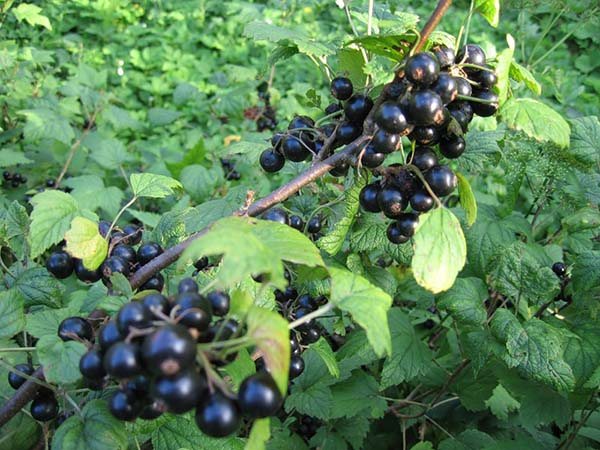

Timely and correct pruning of currants provokes the growth of new basal shoots from the underground part of the bush, which are sometimes called "zero" or annual, and also promotes better branching of the bush on perennial branches. Thus, the constant replacement of shoots does not allow the berry shrub to stagnate, forcing it to bear fruit abundantly every year.


Advice! In the future, when pruning currants, it will help you a lot if you know the structure of its bush.
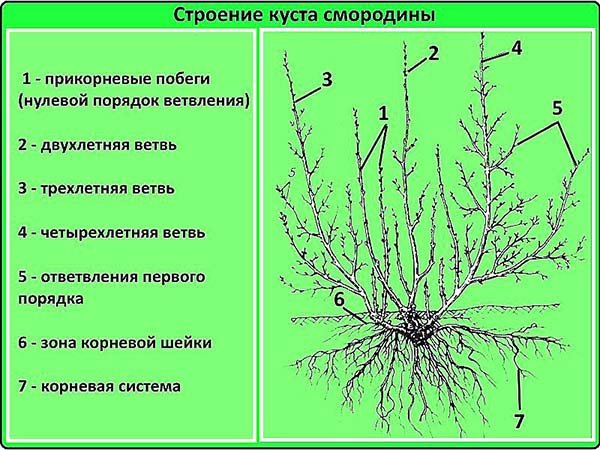

Slicing processing
The section processing prevents the penetration of infection into plant tissues damaged during pruning. Before processing, they wait until the juice ceases to stand out, and the cut dries up.
On the sawdust smoothed with a garden knife and cleared of sawdust, a garden pitch is applied. To prepare the product, take 6 parts of rosin, 3 parts of wax, 1 part of turpentine and 2 parts of propolis. Propolis and wax are melted in a water bath, rosin is added. Stir, bring to a boil. Then it is cooled and mixed with turpentine. The resulting mass is applied to sections.
Purpose of the procedure
Pruning a fruit tree is done in pursuit of several goals:
- Stimulation of the formation of young shoots. As a result, a rejuvenating effect is achieved by replacing old, less productive shoots with new ones that are capable of producing crops with full force.
- Normalization of crown aeration and supply of the required amount of light. In the course of cutting the bush, crowding is eliminated, the risks of infectious diseases are minimized.
- Increased productivity. In the absence of old branches, the plant uses its forces not to provide them, but to form and further develop the ovaries.
- Pest prevention. With a systematic correction of the green mass, the likelihood of damage to healthy segments by insects is minimized.
- Facilitate harvesting.
- Increase the fruiting period by up to 20 years.
Pruning methods and instructions for them
Currant pruning has to be carried out throughout the life of the bush. There are different methods of trimming - they differ not only in the technique of execution, but also in the tasks set. Let's take a look at the most popular cropping methods.
Before boarding
Principles of pruning a seedling before planting:
- Before planting seedlings in the ground, their tops are cut off.
- Only 2-3 buds are left on each branch.
- Weak branches are cut more strongly - only 1-2 buds are left.
Trimming the tops stimulates branching, which increases yields and makes the bushes more powerful.
For rejuvenation
Rejuvenating pruning is best done in the fall. The timing depends on the type of currant:
- black is rejuvenated at the age of 5;
- red - at 8 years old.
To rejuvenate the currants, remove old shoots in one of three ways:
- Cut to the ring. The branch is cut off entirely - the hemp is not left. Slices must be covered with garden pitch.
- Cutting for the kidney. The shoot is shortened - only part of it is cut off. If the bush is sparse, a cut is made on the bud looking deep into the bush - so that it becomes thicker.
- By cutting to the outer kidney. If the bush is too thick, then the cut is made on the outer bud - so that it becomes less frequent.
Anti-aging pruning has its own nuances for red and black currants:
- In black currant, the main crop ripens on three-year-old shoots. Therefore, all branches older than 5 years are removed. To stimulate the growth of one-year-olds, they are pruned by a third. If there are many two-year-olds on the bush - more than 8, then three-year-olds are cut out completely.
- Red and white currants have the most productive shoots - 5-8 years old. Therefore, all branches over 8 years old are removed, leaving no more than 12 branches on the bush.
Also, in red and white currants, partial rejuvenation is often carried out - pruning with a transfer to branching. Thus, the old, but fruiting branches, 5-6 years old, are rejuvenated. The strong branch of the 1st order is chosen. The skeletal branch is cut off after branching.
Old overgrown shrubs rejuvenate gradually, leaving 15-18 fruiting branches. Rejuvenation procedure:
- Cut off the zero shoots, leaving the three strongest ones.
- Remove all shoots thickening the bush.
- Gradually prune old skeletal branches - 5 pieces per year, no more. First, remove those that are over 5 years old - they are easy to recognize by their small growth, color of the bark and branches of the 2nd order.
In 3-4 years, the old bush is brought back to normal.
What you need to know about pruning currants, an experienced gardener tells in the video below:
After harvest
Experienced gardeners practice pruning right after harvest. The advantages of this pruning:
- The branches receive more sunlight, which promotes photosynthesis of young shoots.
- The plant does not waste energy on shoots that it does not need.
- The inner branches, like the lateral branches, grow intensively - a beautiful bush shape is formed.
- Reduces the risk of fungal infections.
Pruning immediately after fruiting increases the yield of the next year. If you notice that the fruiting of the bush is falling, pick the berries and cut 2-3 skeletal branches at the root. The main thing is not to leave stumps. So you will free up space for new branches, the sun will better illuminate the fruits next year.
Michurinsky way
A private garden is one thing, a whole plantation of shrubs is another. For an industrial scale, conventional pruning techniques are disadvantageous. For intensive cultivation of currants, the Michurinsky pruning method is used. This method was developed at the V.I. Michurin, it increases the yield by 30%.
The procedure for pruning currants according to Michurin:
- The planted currants are not cut for 5 years. Fruiting begins in the second year.
- For 5-6 years, 50% of the plantation is cut out at the root. The soil is fertilized. The remaining bushes continue to bear fruit.
- After a year, the regrown young rootstock is thinned out, leaving about 20% of the shoots.
- A year later, the rest of the old bushes are cut out. The rest are thinned and pruned.
The rejuvenation carried out allows harvesting for another three years. Then the bushes are to be uprooted.
Radical method
Radical pruning is carried out with the rejuvenation of bushes aged 8-15 years. Its purpose is to prolong fruiting.


Radical pruning order:
- Trim all branches to the base. Leave stumps no more than 3-4 cm in height.
- Lubricate the cuts with garden pitch.
- Sprinkle the soil near the stumps with plenty of humus and sprinkle the hemp left over from the bush with it.
- To prevent the roots from freezing in winter, the remains of the bush are mulched on top with straw or sawdust.
The time is late autumn, when all the foliage falls from the bush. Radical pruning helps to awaken the basal buds, and new shoots will appear in the spring. The strongest will be selected from them - of them and will form a new crown.
Trimming on a trellis
The method of growing berry crops on trellises came from Western Europe. This approach reduces the final yield, but the berries are sweeter and larger.
The procedure for pruning currants when growing on trellises:
- After planting on seedlings, cut off all side shoots - up to 5 cm. Such a large pruning translates growth buds into fruit buds.
- Cut the branches located near the ground so that the berries do not touch the ground. Do not touch the main shoot. With systematic pruning of the lower branches, the crop is formed at a height of 90-150 cm - this simplifies harvesting.
- If the plant forms two trunks, then choose a stronger one, remove the second one.
- In subsequent years, the formation is carried out, regularly cutting out the basal shoots and those close to the ground. In appearance, the currant bush should resemble a columnar tree.
Pruning currants on a trunk
Once, standard pruning was popular in Russia - back in the 19th century, then it was forgotten, and now it is becoming popular again. This unusual pruning method allows you to form a sprawling mini-tree from a currant bush.
Trim order:
- Choose one shoot, the most powerful - it will become the trunk of the currant "tree". Cut off all other branches.
- Cut the vertical shoot, chosen for the role of the trunk, to the desired height - 80-100 cm. Leave 3-4 upper buds - to form the crown.
- Wrap the lower part of the shoot with an opaque film or put on a tube (plastic, rubber). Place a support - pipe, timber or something similar - to support the "tree".
- Lateral shoots that will appear in the upper buds, pinch after 3-5 leaves.
- In the second year, pinch new layers.
- In the third year, the plant takes on the shape of a tree. Cut out any broken, diseased or weak branches. Remove overgrowth constantly.
Experienced gardening tips
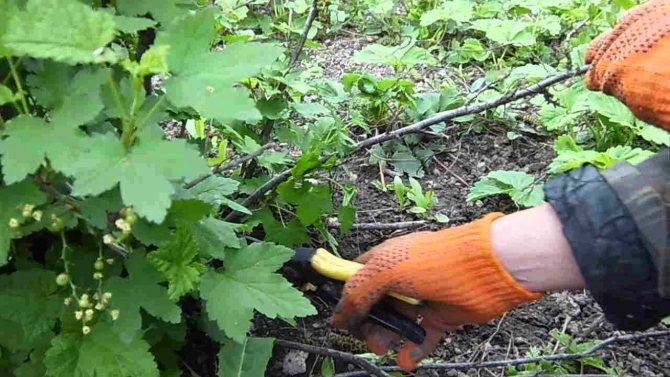

Without pruning the bush, you should not wait for a rich currant harvest
The recommendations of experienced colleagues will help novice gardeners to avoid mistakes:
- Not only adult shrubs need pruning, but also young seedlings.
- Extra shoots should be removed at ground level. This method stimulates better lighting of the bush, which will lead to higher yields.
- Even for a small shrub, no more than 5 branches should be left. From this amount, new strong shoots are formed.
- The procedure is recommended to be performed no later than mid-October so that the currants are not damaged by frost.
Follow-up care
With the onset of autumn, part of the foliage is still preserved on the currant bushes, so the spread of diseases and harmful insects should be prevented. To do this, use Bordeaux liquid at a concentration of 1% to process the green mass of the bush. Do not neglect the cleaning of the waste remaining after trimming.
Additionally, the surface of the substrate in the peri-stem region is loosened with a pitchfork or a rake, stepping back from the base about 20 cm.This allows you to ensure the supply of the required amount of oxygen to the root system.
To achieve maximum efficiency when loosening, a potassium-phosphorus mixture is embedded in the soil. It is also allowed to dig in rotted manure around the perimeter at a distance of 30 cm from the plant.
Currant rejuvenation
If, as in my case, a novice summer resident is faced with the need to rejuvenate a heavily neglected bush, you need to start with the following operations:
- Remove weeds, debris, fallen leaves around the root of the plant. Cut dry, dead, crooked branches so that there are no stumps left;
- Also remove the branches that have fallen to the ground, they are the weakest, and there will be no sense from them;
- Branches on which moss or lichen grows are also cut at the root;
- Biennial and old branches are removed, since the currant bush actively bears fruit only on young shoots. With the age of the branch, its yield decreases;
- Having removed all the listed parts of the bush, you need to choose from those branches that remain, branches with shoots. On these branches, only one branch is left - the strongest. Thus, the density of the plant is regulated;
- If healthy branches are crowned with dried tops, then these tops are cut to the first living bud, directed outward of the bush;
- In the black currant bush, 15-20 shoots are left, but only those that grow from the ground.
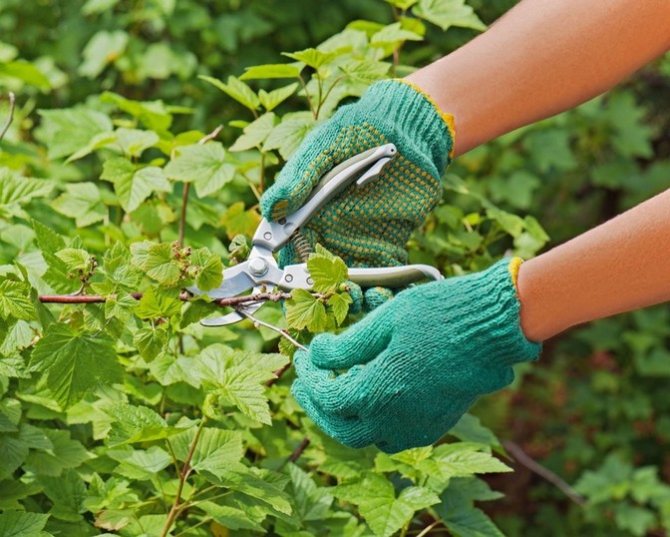

Mulching and shelter for the winter
After completing the basic measures for preparing for wintering, you should mulch the treated soil (up to 10 cm layer), if you have not done this earlier. As mulch, you can use all the same compost (at the same time fertilizer), leaves of ornamental shrubs or trees (only not fruit trees), rotten sawdust or hay, grass cut from the lawn (for example, left over after its autumn preparation for winter).
Important! You need to lay mulch only on still warm soil. If you do this already on frozen ground, then the effect of such mulching will be negative, as a result, the bush in the spring will only slow down in development.
Mulching on dry sunny days will prevent the rapid loss of nutrient moisture, and at low temperatures, such a shelter for the winter will save the roots of the plant from freezing, which are located close enough to the ground.
In general, currants are considered to be very frost-resistant cultural, they can withstand a drop in temperature to -25 ..- 30 degrees, so for the winter they are somehow not specially covered. But with a greater decrease in degrees, it is still recommended to cover for the winter, more precisely, it is to mulch, or use snow.
If you live in a private house (you can hardly get to the dacha if it already snows), then you can cover the currants for the winter with the snow itself. First, throwing it under the bush, and then filling it completely.
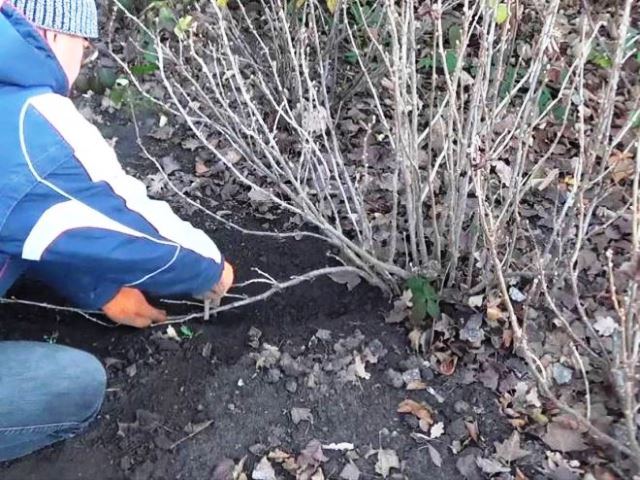

Features of cutting currants of different varieties
The pruning technique, or rather its subtleties, depend on the variety of currants. Currant varieties differ in nuances:
- Altai;
- with active shoots;
- with passive shoots.
Altai varieties
A distinctive feature of the Altai varieties is fruiting in the middle and upper part of the stem. Therefore, if you cut off these parts of the shoots, the yield is reduced. In these varieties, only old, well-bearing branches are cut off. All other shoots are not shortened, except for diseased and damaged by insects processes.
With active shoots
Varieties with active fruiting have a large number of zero shoots - they are produced in large quantities every year. They germinate mainly in the root zone of the bush. These shoots are unbranched and must be cut. If a young shoot has grown to 30 cm, it is cut off, cutting off weak buds.
With passive shoots
Passive fruiting varieties are in less demand than previous currant varieties - they grow too slowly.Young branches on such bushes are cut slightly, or not cut at all. By pruning tops and old branches - 6 years of age, they give the young growth an opportunity to feed and give a good harvest.
How to carry out the procedure: tips for novice gardeners
Before boarding
Currants should be planted about 3 weeks before the onset of frost... From this moment, care begins, which has a beneficial effect on the formation of the plant.
Before planting a seedling, you need to cut off the tops of all shoots... On each branch, 2-3 buds should be left. After the first season, the bush will acquire an average of five new shoots.
For the purpose of rejuvenation
Rejuvenation of a 5-6 year old bush is carried out in order to extend the life cycle of the currant.
At the same time drooping and broken parts of the bush are cutaffected by diseases or pests. The tops are removed from the shoots of the last year, and 3-5 more promising ones are chosen from the new ones.
You cannot cut off a branch near the bud itself, this can destroy the entire process.


Rejuvenation of a 5-6 year old bush is performed in order to prolong the life cycle of the currant
Unusual ways
There are several technologies for pruning currants. Novice gardeners are encouraged to try the Michurinsky methodwhich provides good yields on large plantations.
The essence of the method consists in the following rules:
- after planting the seedlings, the currants are not pruned for 5 years;
- after 5 years, half of the bushes are cut at the root (in the future they need to be carefully fed);
- a year later, about 20 of the grown sprouts are left, the rest are removed;
- a year later, similar actions are carried out with the other half of the bushes;
- after uprooting old plants, the site is planted with new shoots.
It also happens that the bush is not yet so old, but fruiting has dropped sharply. In this case, it is advisable apply a radical way of pruning... It consists in completely removing the pagon from the plant, not reaching the base of only 3 cm.
After processing the cut line with garden varnish, the root system should be abundantly enriched with fertilizers and the stump should be covered with soil. Sometimes gardeners change the soil around the bush, diluting it before backfilling with humus.
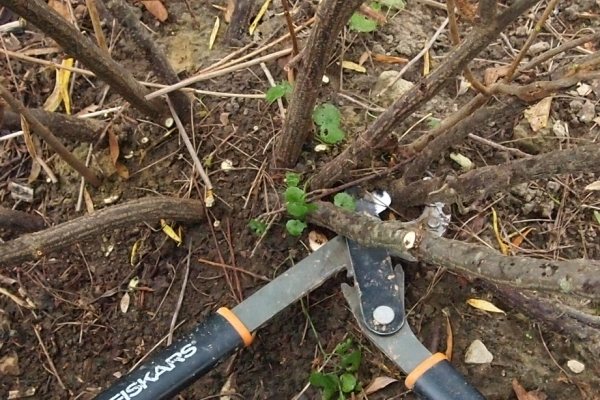

Novice gardeners should try the Michurinsky pruning method, which provides good yields.
After harvest
Seasoned gardeners have been using summer pruning for a long time., motivating their actions with the following advantages:
- excess sunlight has a positive effect on the process of photosynthesis of young shoots;
- the growth rate of internal branches is equal to the indicators of lateral processes, which forms a beautiful bush shape;
- the risks of fungal infections are reduced to zero.
Autumn pest and disease control
Treatment from pests and diseases is an important step in caring for currants in the fall. After harvesting, you must carefully inspect the planting of currants. Most often, shrubs infect kidney mites and powdery mildew.


How to deal with a kidney mite
The pest affects the black currant bushes most of all. But white and red currants can also be affected.
- In infected bushes, the buds do not bloom in the spring, but dry out. This causes a decrease in yield, the normal development of the bushes is disrupted, the plants die.
- The harm of the tick also lies in the fact that it carries mycoplasma disease (terry).
The tick hibernates and develops inside the kidneys. In affected plants, the buds become larger and more rounded. Infection and spread of pests occurs through planting material, thanks to strong winds, birds, insects. If there are 2-3 diseased kidneys on a branch, then they must be removed. If there are more such buds, then the entire branch is cut off. Modern means - bioacaricides also effectively destroy kidney mites. The most popular drugs are:
- "Biokol",
- "Akarin",
- Fitoferm.
When using them after harvesting, it should be borne in mind that the drugs act at elevated air temperatures (from 15 to 19 ° C). In windy, cool autumn weather, they are useless.
After the end of the fruiting period, you can use pesticides with a strong effect. Acaricidal preparations:
- "Rotor-S",
- "Phosphamide"
- "Nitrafen".
As a preventive measure, it is recommended to regularly weed the plantings of currants. Fallen leaves and branches after sanitary pruning are immediately removed and burned.
How to protect yourself from powdery mildew
Fungal disease develops on foliage, branches, sometimes affects the fruit. Most of all, the disease affects black currant varieties. Diseased bushes tolerate frosts worse, lose stamina and bear much less fruit.
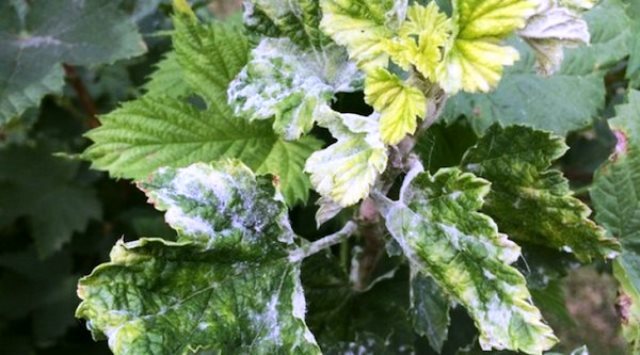

The fungus persists in fallen leaves and hibernates well. Therefore, fallen leaves and cut branches are always burned. Visually, the disease manifests itself as a white bloom on the leaves. There are several reasons for the appearance of powdery mildew:
- dampness and cloudy weather;
- frequent watering of the bushes;
- if infected plants grow near the currant.
If gray-brown leaves are found on the tops of the shoots, it is necessary to treat the bushes with a special solution after harvesting. In eight liters of water, 40 g of sulfur are diluted, 1 tbsp. tar soap. When processing currants, you should try to get the solution on both sides of the leaves. The twisted tops of the shoots are necessarily cut off and burned. Processing is carried out 2-3 times.
Optimal timing of the procedure
The autumn procedure is carried out immediately after leaf fall and the end of sap flow. This usually happens in late October - mid November, before the onset of frost.
Pruning times vary depending on the growing region. In the Moscow region, frosts begin in mid-November, so the procedure is carried out in the last days of October. In Siberia, in autumn, there are often sharp changes in temperature, so experienced gardeners recommend holding an autumn event in mid-September.
When is the best time to prune - in spring or autumn
The best period for pruning a fruiting bush is autumn... During the season, the shrub grows actively, young shoots appear on it. On some, a lot of berries are formed, while others are not fruitful. Unproductive branches take nutrients from the bush and create shade for fruiting shoots. These branches are removed after the end of the season. In the spring, you can make a mistake with the choice of productive branches.
Pruning goals
There are several types of currant pruning. Each type of pruning is carried out for a specific purpose:
- Sanitary. Its goal is to remove all unnecessary shoots, diseased, damaged, dry, defective. It is forbidden to break out the shoots with your hands, leaving hemp - the risk of rotting the bushes increases.
- Anti-aging. It is aimed at removing old branches that draw off plant juices. As a result, the yield of the bush increases.
- Molding. This pruning aims to form a specific concept for the bush. Achieve uniform fruiting of branches of different ages. The shrub is given a neat and attractive appearance, easy to service, and conducive to the ripening of berries.
- Supportive. Carried out throughout the life of the bush, is aimed at maintaining good growth, fruiting and healthy adult plants. The task is to prevent the growth of branches outside the formed bush.
- Topping. It consists in removing the tops - with pruning shears cut off 2-5 cm of the shoot. The process is similar to molding pruning, but the effect is similar to the sanitary and anti-aging procedure. Pinching is used only on black currants, since in red and white, berries are formed just on the upper branches, and removing the tops will negatively affect their harvest.
Pruning seedlings
Currants are planted, like other berry bushes, in autumn or early spring.The branches of the planted seedling should be 25 to 40 cm long and have only 3-4 buds. During the first year of life, the seedling will give new shoots and zero shoots - basal shoots.
Read also: 11 Dutch varieties of tomatoes for open ground and greenhouses - the best tomatoes of the selection of Holland
Root shoots, zero, are of particular value - branches of the 1st and 2nd order grow on them, and these branches provide the main crop.
When to prune the bushes?
Regardless of the variety of currants pruning must be done annually... The best time for the procedure is autumn, when the currants shed their foliage.
Autumn procedure has the following advantages:
- sanitization (this is an effective method of combating diseases and insects);
- the plant does not react so painfully to pruning, does not emit juice;
- the opportunity to form and rejuvenate garden culture.
Light cleaning is carried out in spring currants from frozen and broken shoots. The advantage of the spring procedure is to stimulate the growth of new shoots, which will begin to bear fruit as early as the next season.
If these rules are neglected, then juice will be released from the cut sites, which depletes the plant. The likelihood of infection with fungus or other diseases will also increase. Instead of a full-fledged vegetative function, currants will spend energy on recovery.
Correct pruning of black currants is the key to a large harvest:
rules
Every gardener is obliged to adhere to simple rules for the sanitization of berry crops:
- You can not start anti-aging and pre-planting pruning before the leaves completely fall off.
- Be sure to make straight cuts. Otherwise, the plant will be sick for a long time, it will die in frost.
- Do not leave pruning old, diseased branches in the garden. Throw them in a landfill or burn them.
- If you are removing the bushes at the root, leave a small stump on the garden bed (no more than 5 cm high). Otherwise, it will become a dwelling place for pests.
- After cutting, treat the "wounds" on the bush with brilliant green or garden pitch. As an antiseptic, you can use copper sulfate, hydrogen peroxide.
Ignoring the safety rules for agricultural procedures in the garden will increase the risk of currant death or infection.
Required tools
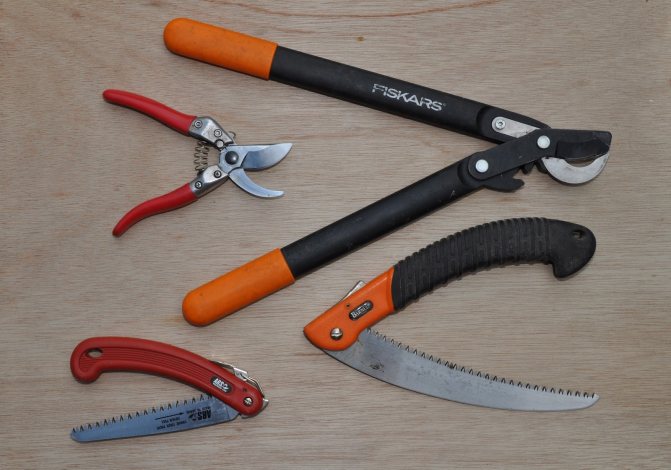

You need to use a quality tool, otherwise you can damage the branches
High-quality pruning can only be guaranteed by a sufficiently sharp garden tool. It is pre-disinfected in boric acid, manganese solution or alcohol to prevent the spread of bacteria and fungus to healthy plants.
Required tools:
- hacksaw or saw - will help remove old thick shoots;
- secateurs;
- lopper.
This set of tools will make it easy to trim any, even the most neglected bush.
Gardener mistakes
Common mistakes when pruning currants:
- Leave many branches. Newbie gardeners often feel sorry for the shoots - they do not prune them, they leave too many old branches. Such pity turns into a drop in yields. The bush spends energy on maintaining old branches, and not on forming a crop.
- The timing of pruning is wrong. If you are late with pruning, the shrub may freeze. If you start pruning, when the leaves have not yet fallen, and the sap flow has not stopped, the currant "cries" for a long time after pruning. The plant gets stressed, the risk of infection increases, immunity and yield decrease.
Autumn pruning is a mandatory agrotechnical measure when growing currants. By remembering the order and rules for pruning, you can maintain the productivity of the bushes at a high level and extend their life cycle.
0

